

Scan here to nominate your favorites now!




Scan here to nominate your favorites now!

Think your favorite deserves the spotlight? Now’s your chance to shout them out! We’re taking nominations for the best in Arkansas cannabis —products that go above and beyond.

Nominate now through July 15, 2025 Visit arcannabistimes.com/nominations-25 to get your nominations!




CLEON AURELIUS FLOWERS, SR., M.D.
LINDA PONDEXTER CHESTERFIELD

Join us for a powerful evening of celebration, culture, and inspiration as we honor the 2025 Class of the Arkansas Black Hall of Fame.
Recognizing our 31st Induction Ceremony and 33rd year, the Arkansas Black Hall of Fame continues our mission to honor the achievements of Black Arkansans who have made significant contributions to their fields and communities—locally, nationally, and globally.
Introducing the 2025 Inductees:
• Linda Pondexter Chesterfield
Revered State Senator (Ret.) & Education Icon
• Cleon Aurelius Flowers, Sr., M.D. (Posthumous) Pioneering Physician, Mentor, Civic & Social Leader
• Garbo & Archie Hearne, M.D. Trailblazing Art Curators & Visionary Entrepreneurs
• Honorable Marion A. Humphrey, Sr. Legendary Jurist, Pastor, Civic & Social Leader
• Charlie Nelms, Ph.D. Towering Higher Education Leader, Author & Philanthropist
• Latriece Watkins

GARBO & ARCHIE HEARNE, M.D.

CHARLIE NELMS, PH.D.
HONORABLE MARION A. HUMPHREY, SR.
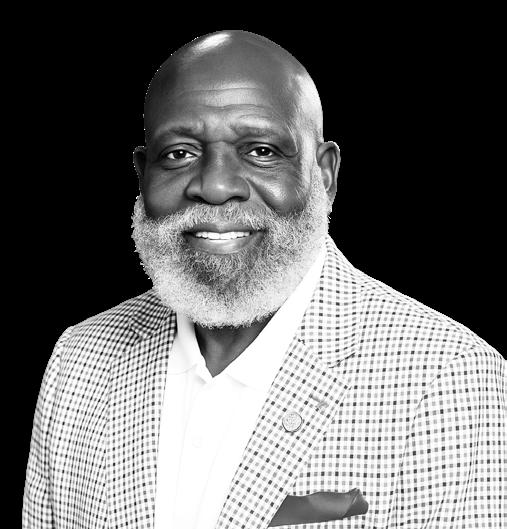
LATRIECE WATKINS



Business Executive Extraordinaire EVP. Chief Merchandising Officer Walmart U.S.)





27 HAUS
A German concept in efficient building spreads to Northwest Arkansas, where a “passive house” sets the trend. By
Jacqueline Froehlich
34 UP-AND-COMING
Revisiting the heyday of University Park, a neighborhood built by Little Rock’s Black professional class. By Frederick McKindra
40 BEST OF ARKANSAS
The best of everything, from our annual readers poll.
42 HAIRPIN
Your pick for the best gay bar in Arkansas really gets around. By Stephanie Smittle
48 VINTAGE
An Arkansas Times editor discovers secondhand style at Crying Weasel, voted the best shop for hip duds. By Daniel Grear
52 NOT TRIVIAL AT ALL
Gaming out the best way to bond with your friends in our year 2025. By Milo Strain
56 WOMEN'S WORK
The best handyman in town isn’t a man at all. By Rhett Brinkley
60 LAW OF THE JUNGLE
Lion Legal perches above the rest. By Austin Gelder
65 WINNERS’ CIRCLE
All your 2025 Best of Arkansas picks.

Q&A: Wendell Griffen jumps back in the game.
From the Farm: Multiplying revenue with rabbits.
Big Pic: Disgraced state Sen. Jeremy Hutchinson is pardoned and ready to party.
15
Trust Tree grows, an uncle+nephew show at White Water Tavern, Phosphorescent at Rev Room, “Hair” at The Rep, a conservation exhibit at AMFA and more.
22
Arkansas LEARNS madates change for the state’s youngest students, but doesn’t pay for it. Plus, a running tab on the voucher bill.
By Mary Hennigan and Benjamin Hardy
95 CULTURE
Little Rock’s Grace United is desegregating the pews. By Leon Jones III
100 FOOD & DRINK
Arkansas’s newest crop? Beer. By Phillip Powell
104 CANNABIZ
Smoke a bowl, get swole. It’s a thing! By Griffin Coop
106 THE OBSERVER
Hair today, gone tomorrow.




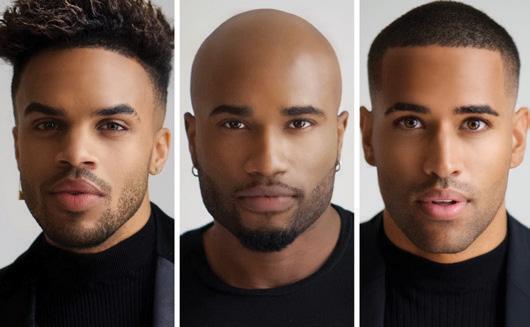



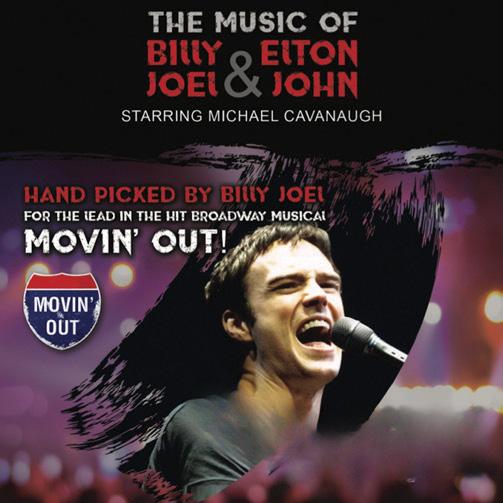









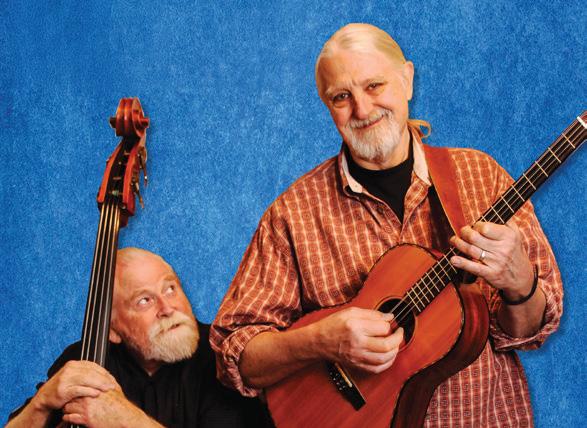









SŌ PERCUSSION







Stephanie Smittle Leon Jones III
EDITOR EMERITUS Max Brantley
CONTRIBUTING EDITOR Mara Leveritt
PHOTOGRAPHER Brian Chilson







DIRECTOR OF DEVELOPMENT Wythe Walker
ADVERTISING ART DIRECTOR Mike Spain
GRAPHIC DESIGNER Katie Hassell
DIRECTOR OF ADVERTISING/ SPECIAL PUBLICATIONS PUBLISHER Brooke Wallace
ACCOUNT EXECUTIVES
Terrell Jacob and Kaitlyn Looney
ADVERTISING TRAFFIC MANAGER Roland R. Gladden
DIGITAL AD COORDINATOR Sarah Richardson
SPECIAL SECTION MANAGING EDITOR Caleb Patton
EVENTS DIRECTOR Donavan Suitt
IT DIRECTOR Robert Curfman
CIRCULATION DIRECTOR Anitra Lovelace
CONTROLLER Weldon Wilson
BILLING/COLLECTIONS Charlotte Key CHAIR MAN Lindsey Millar
PRODUCTION MANAGER Ira Hocut (1954-2009)

51, ISSUE 10
ARKANSAS TIMES (ISSN 0164-6273) is published each month by Arkansas Times Limited Partnership, 201 East Markham Street, Suite 150, Little Rock, Arkansas, 72201, phone (501) 3752985. Periodical postage paid at Little Rock, Arkansas, and additional mailing offices. POSTMASTER: Send address changes to ARKANSAS TIMES, 201 EAST MARKHAM STREET, SUITE 150, Little Rock, AR, 72201. Subscription prices are $60 for one year. For subscriber service call (501) 375-2985. Current single-copy price is $5, free in Pulaski County. Single issues are available by mail at $5.00 each, postage paid. Payment must accompany all orders. Reproduction or use in whole or in part of the contents without the written consent of the publishers is prohibited. Manuscripts and artwork will not be returned or acknowledged unless sufficient return postage and a self-addressed stamped envelope are included. All materials are handled with due care; however, the publisher assumes no responsibility for care and safe return of unsolicited materials. All letters sent to ARKANSAS TIMES will be treated as intended for publication and are subject to ARKANSAS TIMES’ unrestricted right to edit or to comment editorially.
©2025 ARKANSAS TIMES LIMITED PARTNERSHIP
EARLY BIRD TICKETS
$30+ Fees
TILL 8/8

FRIDAY AUG 22• 6 - 9 P.M.
River Market Pavillion BROUGHT TO YOU BY
PARTICIPANTS INCLUDE
Lost Forty, Moody Brews, Rusty Tractor Vineyards, Origami Sake, Vino’s Brewpub, Rock Town Distillery, Bentonville Brewing, Arkansas Meadery, Brick & Forge, Fox Trail Distillery, Bloody Darn Good and MANY MORE !
VIP TICKETS $100 + Fees
Early Entry 5:30 INCLUDES PRIVATE SEATING & TABLES, CATERED BUFFET AND PRIVATE BARTENDER.
SCAN TO PURCHASE TICKETS:

SPONSORED BY
GENERAL ADMSSION
$40+ Fees
$45Cash at Door
MUST BE 21 & OVER.
MUSIC BY: FOLLOW US
MUSIC THE AMY GARLAND ALL-STAR BAND + THE RETURN OF ARKANSAS’ OWN DIAMOND JYM







After decades of public service, pastor and former judge Wendell Griffen is throwing his hat into the ring for a different kind of role: Pulaski County judge. (The county judge presides over county government, which is very different from a judicial role, which Griffen has held before.) Griffen, 72, was raised on a small farm in Pike County, and has a long history of trailblazing: He was the first Black partner at law firm Wright Lindsey Jennings and one of the first two Black judges on the Arkansas Court of Appeals. A former Army officer, he also ran for the Arkansas Supreme Court twice, all the while making waves across the state for his provocative stances against the death penalty and in support of progressive causes. Griffen’s campaign challenges incumbent Pulaski County Judge Barry Hyde, who’s held the position since 2014 and is seeking a fourth term. Griffen is pitching himself as a pragmatic progressive who combines a proven record of leadership with an earnest desire to tackle the major issues he sees facing the county.
Why are you running for Pulaski County judge? No matter who you are in this county, no matter where you live or what you do, we are one county. We can either do it together or we can leave it to people to face these issues alone, divided and competing with each other. Competition is natural, but the business of government is taking competing aspirations and interests, and working together so that they become communal outcomes.

BEST BOOK YOU’VE READ THIS YEAR?
“Copaganda: How Police and the Media Manipulate Our News” by Alec Karakatsanis.
FAVORITE RESTAURANT IN PULASKI COUNTY?
I have several favorites, depending on my appetite.
FAVORITE PLACE TO GO IN LITTLE ROCK?
Home, especially when our granddaughters visit.
WHAT’S GIVING YOU HOPE?
The power of love triumphs over love of power.
Why have I decided to run for county judge? I have skills and the vision that will serve the people of Pulaski County in our current environment. Which is the only reason to do it. I’ve been an officer in the United States Army, I’ve practiced law and been a partner in one of the largest law firms in the state, and I have skills from cultural competency and inclusion consulting. I’m pastor of a church. All of those skills are executive branch kinds of skills.
What sets your campaign apart? Wendell Griffen. Nobody has my combination of experience, vision, initiative, energy and ability to get things done with different groups of people and the will to make it happen. Every election is about the future, not about the past. One thing I bring to this opportunity is a vision for the future and a history of progressive-minded views about the kind of future government can and should provide to people it wants to serve.
I think the people of Pulaski County want a government that is together and that gets things done for people, and that marshals
the wonderful resources of our 400,000 people and opportunities we have here for the next generation. They want a vision that is upbeat, progressive and forward-thinking.
You said you are “flunking retirement” after a long career. Why jump back into elected office now? I’m 72 years old now, and I suppose somebody would say, “Well, why not let a 32-year-old person do it?” But frankly, experience ought to do more than just make you old. It makes you wise about what ought to happen. The other thing is that when I was in the ninth grade, I was part of New Farmers of America, which was the Black version of Future Farmers of America. The NFA creed has a phrase that has stuck with me ever since: “A life of service is the life that counts.”
There is no expiration date on your obligation to serve, and until you die there is no expiration date on your opportunity to serve. The question is, does one exercise the option to serve? I have the ability, the experience, the knowledge, the energy and the vision to serve. It would be a violation of that creed and everything my parents taught me for me not to serve.
How does your faith and commitment to social justice inform your campaign? My faith affirms the inherent dignity of every being, every person, every creature. We live as part of a great system, and we live in this system in community. We share it, and we have to respect each other in the sharing. One of the problems of religion is that oftentimes it has been used as a weapon against people as opposed to as a guide of bringing people together. And my faith inspires me to look for ways to bring people together, and to see our common needs, hopes, trials, and think in terms of solutions that can benefit us as a community.
When we talk about climate change, we talk about one climate. My faith talks about concern for the least of these, people who are vulnerable. People who do not have enough money to buy two or three cars have a right to transportation, and have a need for transportation. People who do not have employment still get sick, and need to have access to health care. People need housing, and my faith tells me it’s wrong if we don’t address it or think about it. Or to make housing a commodity that only those who have means enjoy when we know everyone needs it. And my faith tells me it’s wrong not to meet those needs.
—Phillip Powell

DOE!: This is a female rabbit, called a "doe." Males are called "bucks."
BY ALAN LEVERITT
This is important. When you want rabbits to have sex, never, ever put the buck in the doe’s cage. She will kick the living hell out of him until escape, not sex, is the only thing on his mind. Female rabbits are incredibly territorial. Instead, put the doe in the buck’s cage. She will be a bit disoriented, and he will be glad to see her.
This is the most recent revelation I have had running my small farm in north Pulaski County.
I am an entry level rabbit wrangler, with only the slightest knowledge of what I am doing. Now that my rabbits are 5 months old and of breeding age, I am teaching myself, through bloody trial and error, how to set the mood for love in the hutches. They are cute, they are cuddly and their back feet have claws like a bald eagle. My bucks need about 12 hours between dates, and my last three doe transfers have left the back of my hands a scratched and bloody mess.
The breeding process is interesting. I deposit the doe in the buck’s boudoir and they spend a few seconds getting to know each other before he mounts her. Think “speed mating” instead of “speed dating.” Once he and she are
in place, he takes off like a jackhammer for 10 or 15 seconds, stiffens for a moment and then falls over backward like he’s been struck by lightning. Such drama kings.
In the more G-rated sectors of the farm, I grow a lot of fruits and vegetables, but heirloom tomatoes bring me to the dance each season. Come first frost, the dance is over, but not so with expenses. Removing rows of tomato stakes and string, spreading truckloads of manure, buying and spreading 1000-pound rolls of mulch hay … all this has to be done in the winter when there is no income.
So it was that I hit upon meat rabbits. That could be year-round income for the farm.
I used to raise sheep and sell lamb at the Hillcrest Farmers Market. But at 73 it just became too damn athletic. Trying to worm a terrified 100-pound ewe is a young man’s work. I think rabbits may be more my speed now. If my learning curve doesn’t totally disable me, I’ll have rabbit meat to sell at market beginning this winter.
My 10 TAMUK does and two bucks are the breed stock for my emerging rabbit empire. TAMUK stands for Texas A&M University at Kingsville, an ag department in south Texas, where they bred these rabbits to be heat-resis-
tant. You can’t hardly freeze a rabbit to death, but if they get too hot, they have been known to eat their young or die.
I confess that I have become somewhat attached to my breeder rabbits. They are curious and friendly and someday I’m sure I will learn how to pick one up. Friends come by, particularly women, and exclaim how cute they are, and how could I think of eating them? I patiently explain that my breeders are not on the menu, and that I only intend to kill their children. I will have the young rabbits butchered at 10 or 11 weeks, when they have reached about 5 pounds of live weight. I’m hoping to get about 300 meat rabbits a year, dressing out at about 2.5 pounds, and selling for about $10 a pound.
Rabbit meat has more protein and fewer calories than chicken, with no cholesterol. And it’s delicious. The last time I had rabbit was when I ran over one while cutting through Camp Robinson on my way from Little Rock to the farm. It was winter and I saw no reason to waste the meat, so I pulled over and tossed him into the truck bed. That night we had fried rabbit with a butter head lettuce salad from the garden. Life out here gets a little strange, but where else would a man want to live?

THANK YOU FOR CHOOSING CALS!
We’re proud to serve Central Arkansas and grateful for your support.
Library Square is better than ever.

Main Library reopens this September with a rooftop terrace, teaching kitchen, production and podcast studios, and an upgraded children’s center.
Catch a film, concert, or event at the Ron Robinson Theater—or book it for your own!







Freedom isn’t free; you really can buy it if you’ve got the funds. Just ask Jeremy Hutchinson, whose now-deleted Twitter bio, “former senator/former felon,” covers the high points.
A member of one of Arkansas’s most recognizable political dynasties but cursed with the impulse control of an untrained golden Labrador puppy, Hutchinson tanked a birthright government career with a series of humiliations that left Arkansas taxpayers and his own children out in the cold. He was first elected to the state Legislature as a Republican in 2000, becoming the youngest member of the state House of Representatives at a time when Democrats still dominated Arkansas politics. Hutchinson stuck around the Capitol for the next 17-plus years, ascending to the state Senate and becoming something of a voice of moderation within the Republican Party as it took over the state.
He also became known for enriching himself. In 2018, as a federal investigation into corruption at the Legislature drew closer to Hutchinson, Arkansas Times editor emeritus Max Brantley summed up the question on everyone’s minds with this perfect headline: “Is Jeremy Hutchinson a criminal? Or simply terminally sleazy?”
Turns out, we didn’t have to pick just one! An indictment soon revealed Hutchinson, an attorney, had accepted vast amounts of cash and gifts from clients while working on legislation that would benefit them. He was sentenced to eight years in federal prison for bribery and tax fraud.
Now Hutchinson is newly free, thanks largely to his dad. A former U.S. senator and the brother of former Gov. Asa Hutchinson, Tim Hutchinson reportedly spent hundreds of thousands on attorneys and worked his connections to secure for his son a golden pardon from President Donald Trump. That makes it a good time to roll out this highlight reel of J. Hutch moments.


The world meets Julie McGee, Hutchinson’s colorful mistress-turned-girlfriend, after police respond to a domestic battery call to a West Little Rock condo where McGee struck Hutchinson with a stuffed alligator head, prompting him to call 911 for help.
An advocate of arming educators in the aftermath of the Sandy Hook shooting, Hutchinson participates in an active shooter simulation where he mistakenly caps a police officer playing the role of a teacher. The bullet was made of rubber, thankfully.
At the height of his Senate career, Hutchinson and partners open the 1836 Club — a hoity-toity private establishment for the political and corporate elite. Located at the historic Packet House on Cantrell Road, within view of the state Capitol, it evokes near-cartoonish visions of smokefilled rooms, shady deals and ladies of the night.

The FBI extracts a series of plea agreements from Arkansas lawmakers, lobbyists and others regarding overlapping kickback schemes in the state Legislature. At the center is Preferred Family Healthcare, a Missouri-based behavioral health provider. Hutchinson had pushed bills to help PFH keep millions in Arkansas Medicaid cash flowing into its coffers … while PFH simultaneously paid him a monthly retainer of $9,000 for his work as an attorney. He resigns his Senate seat in August following a separate but related indictment alleging that he’d misused $200,000 in campaign contributions, depositing some of it into personal accounts, cashing some of it out and spending the rest on personal expenses, including a Caribbean cruise, jewelry and Netflix subscriptions.

A pre-trial hearing in Little Rock reveals the federal investigation into Hutchinson originated when McGee approached the FBI in 2012 after one of the couple's many squabbles, offering them a laptop containing evidence of Hutchinson's alleged financial wrongdoing.
When McGee takes the stand, she’s asked if payments Hutchinson made to her from his campaign fund were legitimate. “If keeping him sexually satisfied is considered campaign work,” she replies. She also claims Hutchinson used proceeds from a campaign fundraiser to pay for an abortion.


While awaiting sentencing on his various federal charges, Hutchinson is found in contempt of court in Pulaski County for failure to pay more than $500,000 in child support, raising questions about his recent vacations and the new swimming pool in the backyard of his West Little Rock home. In January, he offers a pathetic list of possessions that could be auctioned to put toward paying his debt, including the title to his daughter’s car, $60 worth of Bitcoin, an Apple Watch, (presumably used) earbuds, cufflinks and photos of his time in the state Senate.
MAY 2023:
Hutchinson begins serving an eight-year sentence in federal prison for charges related to the Preferred Family Healthcare scheme and other corrupt dealings.
MAY 28, 2025:
Fealty to Trump is rewarded. Hutchinson is freed after serving only two years behind bars.
















FRIDAY 7/11. ARKANSAS REGIONAL INNOVATION HUB, NORTH LITTLE ROCK. 7 P.M. $30-$100.
What’s more liberating than rock ’n’ roll? Serving girls and gender-expansive youth ages 8-18 since 2017, organizers of Central Arkansas nonprofit summer camp Trust Tree know that drums, bass and guitar aren’t just for the boys. If you share the conviction that music and art are some of the best ways of building confidence and unlocking potential in kids regardless of gender, consider supporting the cause by attending Discover Trust Tree, an annual fundraiser where inspired campers will perform and showcase original songs and artwork created during the program alongside hors d’oeuvres, refreshments, crafts and a dance party. Free for kids 18 and under, admission for adults is priced on a sliding scale. Get tickets at centralarkansastickets.com. DG

SATURDAY 7/19. REV ROOM. 8 P.M. $30.
Upon the release of 2013’s “Muchacho,” his career highpoint, singer-songwriter Matthew Huock — known on stage as Phosphorescent — fetched the kind of glowing write-up from Pitchfork that most indie artists only dream about: “On ‘Muchacho,’ Houck gathers together everything he’s attempted — beery, rollicking country rock, haunted tribal hymnals, regret-soaked barroom heartbreak — and fashions it into something close to a defining statement.” The latest album from Phosphorescent, 2024’s “Revelator,” sees Houck mostly part ways with the first of those three identities, trading his most feral moments for all the densely stacked harmonies and lush instrumentation you could ask for. Get tickets at revroom.com. DG
SATURDAY 7/19. WHITE WATER TAVERN. 8 P.M. $10.
Even if Isaac Alexander and Silas Carpenter (pictured at right) weren’t related, I’d have no problem recommending this show; they’re two of the most tuneful singer-songwriters in Central Arkansas. But the fact that 18-year-old Carpenter is scene veteran Alexander’s nephew makes the business of seeing them play back-to-back all the more meaningful. Despite being separated by decades, the two share so much musical DNA that it’s hard not to walk away convinced that songwriting runs in the family. A night of music featuring both Carpenter and Alexander is something like watching a baton get lovingly passed from one generation to the next. Former Grand Serenade bandleader Kyle Mays — whose drawnout, hangover-brushed vocal delivery conveys an ineffable depth of emotion — rounds out the bill. Get tickets at whitewatertavern.com.
DG


FRIDAY 7/25. THE MOMENTARY, BENTONVILLE. 8 P.M. $57.90-$165.
The intersection of uber-sincere indie folk and commercial success is a tricky place to be. As someone who shudders at the thought of listening to Mumford & Sons but absolutely adores Fleet Foxes, I get it. Listeners with strong convictions about the fine line between what’s earnest and what’s saccharine — or what’s fresh and what’s derivative, for that matter — can be hard to please. Colorado by way of South Africa singer-songwriter Gregory Alan Isakov manages to nimbly circumvent these questions, miraculously appealing to both purists and mainstream audiences with his accessible but thoughtful tunes. When Paste Magazine reviewed his latest album, 2023’s “Appaloosa Bones,” the writer summed up this phenomenon well, calling Isakov’s music “almost entirely free of cynicism, instead embracing the sort of romantic, humanist mindset that feels so far removed from 21st-century reality.” Get tickets at themomentary.org. Sidenote: Isakov’s performance at The Momentary comes just days before a sold-out Alabama Shakes show on July 22, so consider the resale market if contemporary roots rock is your jam. DG
WEDNESDAY 7/30. CLINTON PRESIDENTIAL CENTER. 6 P.M. FREE.
“My grandmother, Lucille Hatch Eldridge, wrote letters to me for nearly the entire time that we shared the planet. … In fact, I have few memories that come before my remembrance of receiving regular missives from ‘Mama Ceal’ as we called her.” Those sentences serve as a sturdy introduction to “This Leaves Me Okay: Race, Legacy, and Letters From My Grandmother,” a memoir published by Arkansas native Walter Pryor in May. Through the lens of Mama Ceal, a rural Arkansan born in the 1920s who received only an eighth-grade education, Pryor embarks on an “interweaving of memory, story, and social commentary” that’s “deftly achieved,” according to author and former Georgia state Rep. Stacey Abrams, who will moderate a conversation about the book with Pryor at the Clinton Presidential Center. RSVP at clintonfoundation.org/events. DG
TUESDAY 7/8-SUNDAY 7/27. ARKANSAS REPERTORY THEATRE. $20-$65.
When “Footloose” played at the Arkansas Repertory Theatre last summer, I couldn’t help but ask: Is this show’s depiction of rebellion even remotely relevant to our present moment? A good time was had by all, but the answer to my question was a resounding “no.” “Hair,” on the other hand, may have premiered on Broadway a full three decades before “Footloose,” but its countercultural fixations, particularly resistance in the face of the Vietnam War, will resonate plenty loudly at The Rep this summer, 50 years after that regrettable conflict came to a close. Revolving around a diverse group of free-loving, drugusing and draft-dodging New York City bohemians, “Hair” popularized the concept musical and introduced the world to songs like “Aquarius” and “The Flesh Failures (Let the Sunshine In).” Get tickets at therep.org. DG

THROUGH SUNDAY 8/31. ARKANSAS MUSEUM OF FINE ARTS. FREE.
Curated to get viewers to reconsider their own relationships to the natural world, the Arkansas Museum of Fine Arts’ new exhibit showcases the history of the conservation movement in the United States. Titled “The Long View: From Conservation to Sustainability,” the traveling exhibit focuses on the intersection of environmentalism, history and art, featuring prominent art by big names like John James Audubon, Ansel Adams and Carleton Watkins, some of the first to document the beauty and scale of the American West and lay the groundwork for public lands programs like the National Park Service. Perhaps the exhibit’s most famous piece, Robert Rauschenberg’s “Earth Day,” places the bald eagle, a representation of America, in the center of various environmental degradations. “I hope that people will come in and understand what a wonderful place we live in. The Earth has amazing resources, but it’s up to us as humans to continue to protect it,” AMFA Curator Jennifer Jankauskas said in an interview with the Arkansas Times. Get details at arkmfa.org. PP
TUESDAY 7/15. RIVERDALE 10 VIP CINEMA. 7 P.M. $12-$14.

New York paramedic Frank Pierce (Nicolas Cage), as we discover at the outset of Martin Scorsese’s 1999 film “Bringing Out the Dead,” is in bad shape. Battling insomnia, depression and hallucinations of the young woman he failed to save, his connection to reality is dangerously tenuous. Over three long shifts in as many days, Scorsese’s fourth and final collaboration with screenwriter Paul Schrader follows Frank as he descends into chaos alongside a series of increasingly erratic EMTs (John Goodman, Ving Rhames and Tom Sizemore) and attempts to find absolution in a reformed addict (Patricia Arquette) whose father is on life support after Frank rescues him. Following “Bringing Out the Dead,” Scorsese moved onto bigger budgets and more extravagant premises, but it’s always a treat to revisit the film that closed out his earlier, scrappier era. Get tickets at riverdale10.com. OJ






BY MARY HENNIGAN
Arkansas is home to an estimated 180,000 children under the age of 5. About two-thirds of them, or 120,000, are considered “economically disadvantaged” and qualify for publicly funded child care or education. Of those eligible children, fewer than 40,000 — about one in three — are actually participating in early childhood programs like Head Start or Arkansas Better Chance, the state’s preschool program.
That’s according to an Arkansas Department of Education report on the state’s early childhood system after the passage of the 2023 Arkansas LEARNS Act. LEARNS aimed mainly at K-12 education, putting hundreds of millions of dollars toward school vouchers for private school and homeschool students, raising the state’s minimum teacher salaries, and more. The new law put no new direct funding toward programs for children under 5.
But LEARNS did give some attention to early childhood. It called for the creation of a “simple, unified accountability system” to rate the quality of early childhood programs, and it set up a single “Office of Early Childhood” under the education department to oversee the fragmented system. It also enlists “local lead” organizations around the state to find gaps and duplications in the child care landscape, and to identify opportunities for collaboration and

the sharing of resources.
Planning ahead is especially tricky right now because federal funding for such programs is potentially on the chopping block. Head Start, a program that covers early childhood education costs for low-income families, was cut from federal budget proposals in April. By May, it was back. Early childhood education experts say they remain concerned that such funding flip-flops could put thousands of low-income children at risk for losing care, mental health screenings and reliable meals.
Even so, Nicole Carey, education policy director with Arkansas Advocates for Children and Families, said she hopes a “generation of momentum” at the state level will lead to more reliable, local funding.
“I guess my hope is that if there’s less reliability, or unreliability, on the federal funding side and enough advocacy and data on the state size, then maybe all of that can be used to generate some additional state funding,” she said.
Carey said the federal Department of Government Efficiency (DOGE) has slowed some education- and literacy-related reimbursements, and canceled others. She said she worries especially about Project 2025, a conservative policy plan that calls for eliminating Head Start.
“I think advocates, especially national ad-
vocates, have seen that cutting Head Start is in Project 2025, and because many of the other recommendations in Project 2025 have been pushed forward, there is still that concern [for lost funding] in addition to the actions that have already been taken,” Carey said.
Arkansas boasts more than 7,500 federally funded Head Start slots and deploys state and federal funds for other programs, including Arkansas Better Chance (ABC) and the Child Care Assistance Program (CCAP), to provide free or subsidized care and education before kindergarten.
While not all families with young children are in the market for care, evidence suggests demand is there. In February a child care waitlist opened up after the state reached its funding limit for its School Readiness Assistance program. On June 20, that list had grown to 615 children.
While it’s common to lump child care and early childhood education together, experts in the field emphasize they’re not always the same. Child care offers a safe place for children while their parents are working or otherwise busy, while early childhood education provides more structure and curriculum to foster cognitive, social and emotional devel-
opment. The LEARNS Act calls for inventorying both options, with the goal of making them better and more accessible.
The LEARNS Act calls for a period of “pilot learning years” during which organizations chosen to act as “local leads” assess how to improve child care regionally. The process is being overseen by the Arkansas education department’s new Office of Early Childhood, which was formerly part of the Department of Human Services and known as the Division of Child Care & Early Childhood Education.
Jennifer Glasgow, chief education officer for the city of Little Rock, is one of the local leads in this endeavor. The city is being paid $150,000 annually for three years of the pilot learning experience, Glasgow said.
Since the fall of 2023, Glasgow said she has helped map 113 licensed child care providers in Little Rock, assessed the quality of services based on the state’s Better Beginnings star rating system, tracked the number of births in the city per ZIP code and trained providers on how to improve their quality ratings.
“For every child in child care, there’s four children that are not,” Glasgow said. “[That’s] understanding not everybody’s going to be in care — some people are home with mom, some home with dad. If we wanted every child to be placed in a quality center — a Better Beginnings rating of three or higher — we would be short.”
The state is launching a new assessment called CLASS, an acronym for Classroom Assessment Scoring System, to measure the quality of teacher-child interactions. The assessment is being tested out during the pilot phase and is supposed to be fully implemented in 2026-27.
“[The Office of Early Childhood] is doing this pilot to collect the baseline scores, so that they can determine how to convert a CLASS score into a Better Beginnings rating,” Glasgow said.
Glasgow said she doesn’t know exactly how CLASS will impact providers, but the existing Better Beginnings rating determines how much funding a child care center receives per child. A lower rating means lower reimbursement.
The CLASS scores would, in theory, help parents gauge what providers offer the best care.
According to data from the Arkansas Department of Education, 194 CLASS observations across pre-K, toddler and infant classes resulted in an average score of 5.21 out of a possible 7. Observations of toddler groups reported the lowest average score of 4.64.
“These results support the fact that while there is still work left to do to improve student learning across all ages, there are several facilities that are already providing quality learning opportunities for early learners,” education department spokesperson Kimberly Mundell said.
The question is whether better data and assessments can transform the early childhood system without the state committing significant new funding.
Child care in Arkansas is expensive. According to data from the Economic Policy Institute, infant care averages about $8,873 annually, and only one in four families can afford it when compared to a federal standard that says a family shouldn’t spend more than 7% of its yearly income on care. The average cost comes in just shy of instate tuition at a four-year public college.
As of October, the Arkansas Department of Education reported that almost 40,000 Arkansas children were being served with state and federal early childhood funds. Most of the children were age 4, which the Economic Policy Institute estimated costs an average of $7,670 per student per year. The count does not include families who don’t receive public funds for care.
The LEARNS Act doesn’t put new money toward early childhood education programs, but Mundell said streamlining and moving “some functions in-house” has helped the education department save millions that are “reprioritized for early learning programs.”
Data shared by the education department shows a $3.3 million savings from the 2023-24 school year to the 2024-25 school year. Asked several times, Mundell declined to explain how the savings are being used to make investments in early childhood programs.
Paul Lazenby is head of the nonpartisan nonprofit Arkansas Early Childhood Association, which advocates for early childhood programs through workforce development and supporting policy. He said that while LEARNS does address the quality of early education, the state needs a new law to fund the child care industry.
“We certainly want the federal dollars to keep flowing, and we want the state appropriation to keep flowing to Arkansas Better Chance, [the state preschool program],” Lazenby said. “We know that can’t be everything; we have to do a better job of forging partnerships with private industry.”
Investments in the industry would attract and retain a skilled workforce, and having additional funds would mean more children could get quality child care, Lazenby said. Regardless of where the money comes from, he said, more is needed.
“There’s no other time in a child’s life where the brain is growing faster than when they’re in the birth to 5 ages, so why wouldn’t we put the same amount of emphasis, if not more, on early childhood [than K-12]?” Lazenby said.

ARKANSAS PUT $277 MILLION TOWARD SCHOOL VOUCHERS FOR NEXT YEAR. IT’S STILL NOT ENOUGH.
BY BENJAMIN HARDY
Arkansas’s school voucher program is on the verge of running out of money for the upcoming school year, even with a $90 million infusion state lawmakers provided in June.
Vouchers, which the Arkansas Department of Education calls “Education Freedom Accounts,” give public money to private school and homeschool families to pay for tuition and other expenses. The program was created in 2023 with the passage of Arkansas LEARNS, the education bill championed by Gov. Sarah Sanders, but participation was limited to certain groups of students and capped at a specific number for its first two years. Vouchers will become available to all K-12 students in Arkansas for the first time in the 2025-26 school year, which begins in August.
Or at least the governor frames the program as universal. In reality, participation will be limited by available funds. And numbers provided by the Arkansas Department of Education in late June suggested the state can pay for just a few hundred more vouchers with the money dedicated for the upcoming year.
That will leave Sanders and her fellow Republicans with two options: Turn away applicants or pump even more money into a program that’s already going to cost Arkansas taxpayers $277.4 million in the coming school year.
Meanwhile, state revenue is declining. Thanks to a series of income tax cuts that mostly benefit companies and wealthier households, Arkansas’s year-to-date net available general revenue as of the end of May was $245 million below the same point last year, a 4% drop. If lawmakers and the governor want to fund more vouchers in 2025-26, they’ll need to dip further into the state’s restricted reserve funds, which remain flush for the time being — though they won’t be if they’re raided repeatedly for one-time voucher funding.
On June 20, the Arkansas Legislative Council signed off on transferring $90 million from
the reserve fund to the education department. This wasn’t exactly new money, though; the Legislature set it aside this spring during the legislative session for just that purpose.
At the time, Republican lawmakers framed the $90 million as a piggy bank to be raided just in case the $187.4 million they explicitly allocated for vouchers in the state budget were to run out. But everyone knew $187.4 million wouldn’t come close to covering the demand for vouchers once the state allowed every single private school and homeschool family in the state to ask for a taxpayer-funded check. The true cost for the upcoming school year was always going to be at least $277.4 million.
The question is: How much higher might it go?
The Department of Education isn’t giving straight answers. At the June 20 Legislative Council meeting, state Sen. Clarke Tucker (D-Little Rock) asked an education department official if the $277.4 million would cover all voucher applications for the upcoming year. “Right now we think it is, but we’re still continuing to evaluate that,” Greg Rogers, the department’s chief financial officer, told him.
It’s hard to see how that could possibly be true. As of June 25, the education department had received 45,015 voucher applications. The typical voucher will cost $6,994 in the upcoming school year, meaning the state would be on the hook for more than $314.8 million if every applicant were approved. (It had approved 39,256 as of June 17.) And it plans to continue to accept 2025-26 applications up until the new year begins in mid-August, according to an attorney for the department.
When the Arkansas Democrat-Gazette asked Sen. Jonathan Dismang (R-Searcy) after the Legislative Council meeting whether the governor will ask for more reserve funds for vouchers this year, he also dodged. Some applicants who’ve been approved ultimately won’t go on to use the voucher program, he
told the newspaper. That “will knock down the numbers we are seeking right now in accepted applications,” the senator claimed. (Dismang is the state lawmaker with perhaps the most influence over fiscal matters, so his word carries weight.)
Again, this is hard to buy. It’s true that some applicants may move out of state, say, or attend public school next year after all. But it’s a safe bet that most families applying for a voucher want to use one.
Note also that the vast majority of voucher recipients in the first two years of the program — when eligibility was limited to certain groups of kids — weren’t transfers from public school to private school. Eighty percent of vouchers given in the 2024-25 school year went to students who’d already been in private school or homeschool, or to kids entering kindergarten for the first time. Now that the state has opened the floodgates to all K-12 students, we should expect every private school and homeschool family in the state to apply.
So what happens if there are more qualified applicants than funding? A tweak to the LEARNS Act passed by the Legislature this spring established a priority list laying out who will get a voucher if there’s not enough money to fund all applicants. Kids who were in the program last year get first dibs, then former participants in the Succeed Scholarship program, then children with disabilities, and so on. Remaining eligible students will be waitlisted until slots become available.
The state is evaluating and approving applications in batches every three weeks. There are two more “priority windows” to go before the new school year begins in August, and the applications keep rolling in. That suggests the state may already be relying on the priority list to figure out how to dole out the little money that’s left in the $277.4 million currently allocated. The larger unknown is whether the governor will soon ask the Legislature to pony up even more.



W e C ouldn ’ t d o I t W I thout Y ou !







MORE THAN MEETS THE EYE: Magnolia House in Fayetteville’s downtown historic district looks pretty standard from the outside. It's not. FAYETTEVILLE’S SUPER-EFFICIENT

Wild birds chirp inside a dense grove of magnolia trees shading a new home near downtown Fayetteville. The pale gray two-story Prairie-style single-family residence, appropriately named Magnolia House, appears conventional — until you step inside. The air quality is unusually fresh, the interior virtually soundproof.
“Gives you the feeling of being secluded in the woods here, doesn’t it?” architectural designer and writer Michael Cockram said.
Cockram’s firm, Bowerbird Design, specializes in energy-efficient, high-performance construction. This 1,780-square-foot house he’s developed, however, is different. It’s constructed using passive-built standards.
“The term ‘passive’ can be a little confusing,” Cockram said. “But simply put, a passive house maximizes insulative strategies along with utilizing active energy-efficient components.”
The single-family residence is built on the edge of Fayetteville’s historic district. It was erected on an elevated concrete slab, with walls stuffed with deep layers of fiberglass insulation. The exterior walls are clad with wood sheathing covered by airtight water-resistive barrier membranes. The next layer is foam board insulation. Finally, wood furring strips are attached to the foam board, providing a 3/4-inch air space between the cladding and
exterior lap siding, protecting the structure from outside moisture.
“For a passive house to have high levels of control over the interior living environment you have to ensure that it has an airtight envelope,” consultant Cameron Caja of Polaris High Performance Homes in Fayetteville said.
“And to make sure the home is completely airtight, a high-performance membrane is placed under the concrete slab prior to pouring. That membrane is then attached to the outer framed wall and ceiling sections, creating a continuous protective shell around the entire structure.”
Seams and gaps in this outer shell are meticulously sealed with high-performance adhesive tape imported from Germany, where “Passivehaus” building standards were first established several decades ago.
A ventilator installed in a main floor closet brings in fresh air and filters out dust, mold, pollen and pollutants.
High-efficiency appliances, LED lighting and triple-glazed windows keep energy use low.
“A passive house on average uses 80% less energy than a conventional home,” Caja said. “So there’s a real economic incentive to invest in passive-built residences.”
General contractor Alex Munson said building Magnolia House gave her the opportunity to learn new construction techniques.


RAISING STANDARDS: A spalted pine slab stairway leads to a second-floor studio and guest bedroom/ bath.
SHINE ON: The spacious kitchen is sunlit by south-facing energy-efficient vaulted windows.
“I generally call myself an ultra-custom builder,” she said. “But building a passive house takes a certain commitment to creating an exceptionally energy-efficient and comfortable living space. The rewards can be significant. I will forever be a better builder and will definitely be using these practices on all my homes.”
Passive-built homes are distinct from passive solar homes. First popularized in the mid-20th century, a passive solar house features lots of south-facing windows, as well as thick walls and floors to capture and circulate solar heat gained in winter.
Passive house principles were first conceptualized in the late 1980s by physicist Wolfgang Feist in Darmstadt, Germany. According to the Passive House Institute U.S., the first passive home in America was built in Urbana, Illinois, in the early 2000s.
Now, certified passive structures exist across 42 U.S. states and Canadian provinces. While energy-efficient building envelopes are increasingly being promoted by the construction industry, passive-built structures must meet rigorous standards to win certification. Inspectors check insulation, airtightness and heating and cooling efficiency.
“Magnolia House was CORE-certified earlier this year, verified by Home Energy Rx, a neutral third-party rater based in Little Rock,” Cockram said. “The company also performed several blower door tests at different stages of construction to measure air flow and for air leakages, ranked pass/fail.”
Ground was broken for Magnolia House in November 2023 and completed in mid-July 2024 at a cost of $407,000, or $228 a square foot. It initially listed for $650,000 but took six months to sell despite a hot real estate market.
“I was a bit surprised that the house's energy efficiency wasn’t more of a draw,” Cockram said. “But the passive-built idea is new here.”
Fayetteville residents Nick and Meredith Castin were hunting for an existing eco-friendly home when they learned about Magnolia House. He’s an independent software engineering consultant and city plan-








NITTY-GRITTY: Upper left and bottom left: An energy recovery ventilator unit installed in a main floor closet next to the house thermostat continuously supplies fresh air, filtering outdoor dust, mold, pollen and pollutants. Middle left: Triple glazed European-style windows open to let in fresh air. Center: The great room connects to a deck, which overlooks a neighborhood creek.
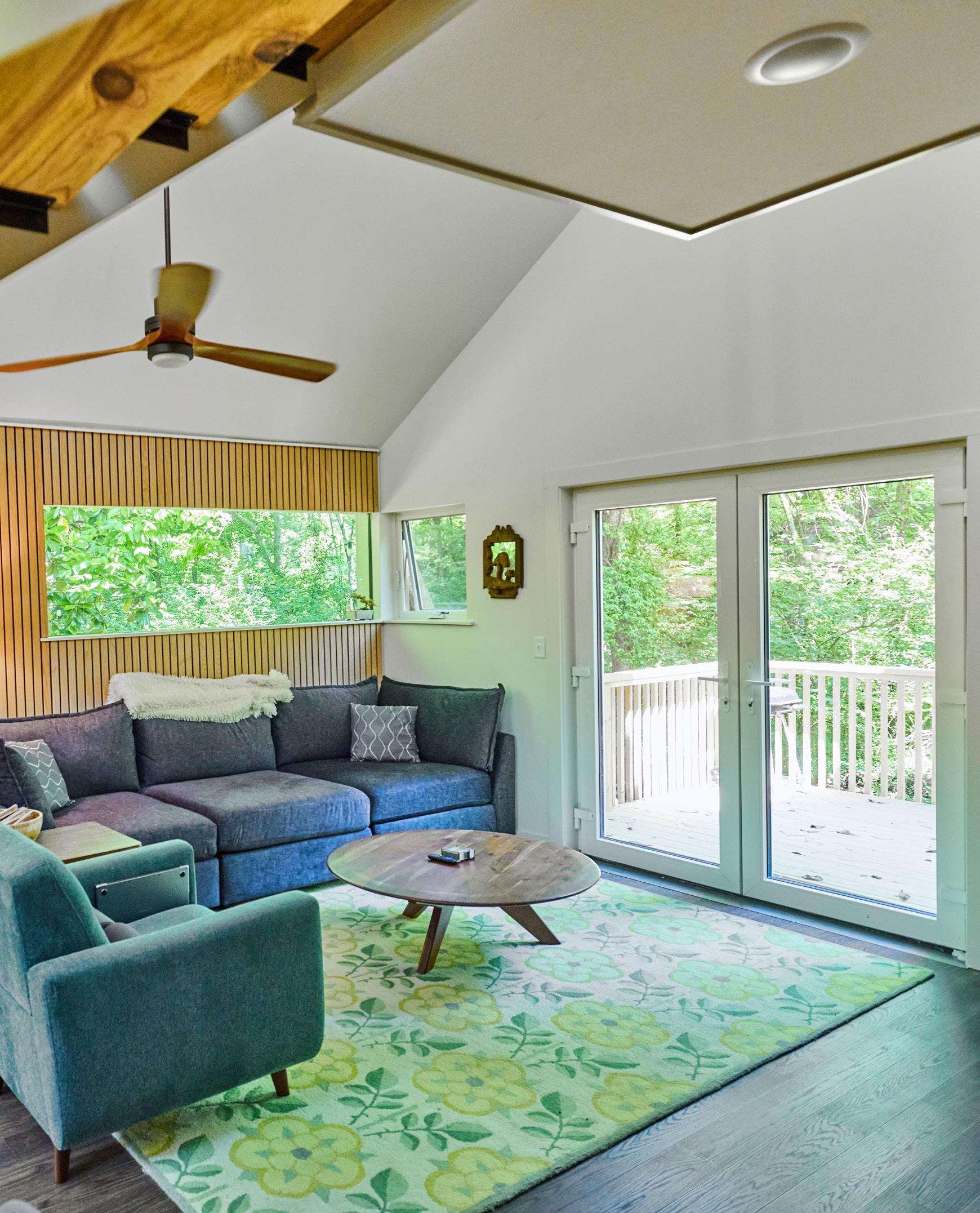
ning commissioner, and she’s a physical therapy consultant.
“When we first walked through Magnolia House last winter, it was bitter cold outside,” Meredith Castin said. “The electrical heating system was barely running, yet the place was really warm.”
The couple paid $585,000 for their new home, which was more than they planned. But Magnolia House offers real long-term savings that have already shown up in their utility bills.
Their monthly electric bill this past late winter and spring, including all electric appliances, averaged around $55.
“We expect to pay a bit more during heat waves and cold spells,” Meredith Castin said. “But at our old house? We were spending a fortune on both electric and gas bills, over $400 a month in winter. And we were still cold, sitting under blankets.”
Another pleasant surprise has been the inherent character of the house.
“We’ve always been old house people,” Meredith Castin said. “I was worried this new house would feel too sterile. But it feels very homey and comfortable.”
South-facing windows cast sunlight through the spacious kitchen, dining area and into the great room. A primary bedroom/bath, utility room and guest bathroom are also situated on the main floor. An airy spalted-pine slab stairway leads to a second-floor office and guest bedroom/bath overlooking a green roof, which the couple plan to cultivate.
The house is situated on a 9,000-squarefoot lot. An ephemeral creek flows close by through a declared urban wildlife habitat lush with paw paw, cedar and oak trees.
“We see lots of birds, owls and deer roaming around,” Nick Castin said. “We found a fawn resting under our deck the other day.”
Most certified passive-built homes, apartments, schools, public and commercial buildings are concentrated in the northeastern U.S. and California, Caja said.
But after Magnolia House was completed last year in Fayetteville, word spread. Caja is consulting on four new passive-built projects in Northwest Arkansas and recently completed construction of the state’s first net-zero passive home in Bentonville, powered by a gridtied solar energy system. A new passive home is also planned in Little Rock, he said.
BY FREDERICK MCKINDRA

In1982,
Ebony magazine commemorated the 25th anniversary of the 1957 Central High crisis with a story titled “Little Rock Revisited.” The city had made halting progress over the past quarter-century, Ebony reported, both in terms of racial equity and economic development. And “Black Little Rock has also changed,” the magazine said.
“West Ninth Ave., the old ‘Harlem’ of the city, has been virtually eliminated by a freeway,” it said. “Most Blacks today live east of University Avenue in what was the old central city of the Arkansas capital. A number of well-to-do Blacks live in a new subdivision, University Park, which is known locally as Sugar Hill.”
Today, many residents of Little Rock never notice University Park, though they surely drive past it frequently. The neighborhood sits just west of University Avenue on a small slice of land bounded by 12th Street to the south and Interstate 630 to the north. Just across the interstate sits the sprawling midtown commercial plaza now anchored by Target. In 1968, when a group of determined Black families banded together to buy lots in the as-yet-undeveloped University Park subdivision, it was home to a brand new shopping center — University Mall.
Little Rock in the late ’60s and ’70s was quickly expanding westward, driven in large part by the panicked white response to the victories of the civil rights era. As white families fled to new suburbs in the University Avenue area — the West Little Rock of its day — Black families were being displaced. Black community in Little Rock had once centered on the Ninth Street district near downtown, a hotbed of entertainment and entrepreneurship that reached its apex in the early- to mid-20th century.

But the construction of I-630 dismantled all that in order to create accessibility to the growing western suburbs, and “slum clearance” projects in other Black neighborhoods did further damage.
University Park began as an idea, a stubborn redoubt against the notion that Black citizens should be corralled in the old eastern and southern zones of the city. When plans for a new subdivision were first announced by the Little Rock Housing Authority, local Black leaders denounced it as a tool of segregation. Then, John Walker, a young civil rights attorney who’d recently opened the first integrated law firm in Little Rock, began agitating his friends and community members to resist in a different way: buying up lots and moving in.
The result was a “rare instance of upwardly mobile and determined families preserving a Black presence in white dominated western Little Rock,” according to a 2022 application to place the
neighborhood on the National Register of Historic Places. Over the next two decades, University Park became a haven for the city’s Black professional class, an enclave of college-educated 20- and 30-somethings working in medicine, law, education and politics.
Thus the moniker in the Ebony article: Sugar Hill. Not that University Park was ever on par with the wealthy Harlem district of the same name, or with other majority-Black districts like Los Angeles’ Altadena or Atlanta’s Hunter Hills. Perhaps Black Little Rock needed the place to serve as a proxy for those far-flung locales — as a target for their envy, or an idol for their admiration. By its own denizens, it’s remembered as something much humbler: a haven for educators, mostly; a starter neighborhood for young Black professionals and their burgeoning families, huddled together on a western hill, staunch against the gale of white flight.
Today, the lawns of University Park are still mostly manicured. Some are still edged by pruned, multicolored floral displays up their front walks. Many neighbors I encountered on recent visits to the area plied me with business cards — for their insurance agency, or financial services firm, or some side hustle — evidence of the neighborhood’s venerable work ethic, and perhaps of the two or more jobs it sometimes took to maintain one’s address there. Most garages contain a car or two, some luxury sedans like a BMW, Jaguar, Cadillac or Lexus. Newcomers are still welcomed to the neighborhood by the Neighborhood Association’s Welcome Committee, and those who are suffering bereavement are contacted by the Benevolence Committee.
But there are signs of wear on the facade, a yard that has grown unruly, whose owner will probably soon receive notice from the Beautification Committee, if the house is occupied at all. University Park is aging.
Diversity in the neighborhood today, however, has increased. Most longtime neighbors remember two white families living in the community from its inception, though it’s always been open to the prospect. Nowadays, a handful of white and Hispanic families live there.
In 2023, University Park was added to the National Register of Historic Places, declaring an identity that belies the nondescript, suburban face of the place. Its historical significance lies not in grand or striking exteriors, but in its role in Little Rock’s ongoing story of segregation, white flight and urban renewal.
Still, there’s the question of generational changeover, whether one age’s ideals of communal uplift still excite the succeeding ranks of Black professionals. Is the idea of a “Sugar Hill,” a place where Black residents with the means and will to maintain such a zone, still relevant in 2025?
Many of University Park’s self-selecting residents in the ’60s and ’70s came from Little Rock’s South End, East End and Dunbar neighborhoods. Some came from Granite Heights, a subdivision to the east of the city with fewer amenities than its burgeoning west side, and other folks had only recently arrived in Little Rock from smaller Arkansas towns.
“We all came from a variety of communities … But one common bond is that they all knew each other when they were children,” said Carmen Smith, who grew up in University
Park and whose parents were some of its first residents. “They had no choice but to know each other. They lived in segregation. Everybody Black knew each other in Little Rock. We either went to the same churches, our parents went to Dunbar [High]. If you look into the history of the Dunbar community, you will find University Park.”
Through the ’50s and ’60s, “urban renewal” plans were laying waste to these traditional communities. The National Register of Historic Places application for University Park describes urban renewal as a federal program that gave cities funding for the purpose of growing business districts and neighborhood redevelopment, sometimes by acquiring land and renovating it. Because the federal government often turned a blind eye to racist tactics used to perpetuate segregation in these areas, minority communities were often uprooted and dislocated, and sometimes relegated to tenancy.
Urban renewal efforts like the Dunbar, Coliseum, Philander Smith, East End, Livestock Show, West Rock and High Street projects “targeted pockets of Black residents proximate to white neighborhoods and classified these areas as blighted, paving the way for de facto segregation,” according to the historic registry application. “Ultimately, city planners perpetuated and extended segregation instead of improving housing conditions in Little Rock.”
The Little Rock Housing Authority was the vehicle for urban renewal projects. In the name of progress and civic revitalization, the LRHA “intimidated or threatened some owners, coerced sales, and evicted residents to segregated housing like the Booker Homes and Hollingsworth Grove, on the city’s southern and eastern edges — remote from jobs and white neighborhoods,” reads the historic registry application.
You can hear laments over the dissolution of that earlier community in a history of the Dunbar neighborhood written by Cheryl Nichols and published by the Arkansas Historic Preservation Programs: “Though many lower income residents of the [Dunbar] neighborhood were moved out (and into public housing) by the Dunbar slum clearance project in the 1950s, an exodus of the more affluent, better educated residents of the neighborhood started in the 1960s as new residential areas — one called University Park, in particular — began to be an option for African-Americans who could afford them.”
By the time the Little Rock Housing Authority began embarking on yet another federally subsidized project called University Park in 1964, the thought of urban renewal efforts in the city as Negro removal schemes had taken hold throughout much of Little Rock’s Black community.
At that time, the area that would become University Park was a mixed-race area of





low- to middle-income homes on the western fringe of town. An Arkansas Gazette article from October of that year detailed a group protesting that the Little Rock Housing Authority was using “federal Urban Renewal money to force Negroes out of the University Park Urban Renewal project and turn western Little Rock into ‘a white preserve.’” Watchful Black residents looked upon the “total clearance” strategy of the project — relocating homes and businesses from that area, installing new streets, gutters, curbs, drainage and utilities, and reselling the land for new development — as a chance to resettle Black residents farther to the east and further establish western Little Rock as de facto whites-only territory.
This didn’t dissuade John Walker, though. A civil rights pioneer, Walker’s commitment to integration had already led him to purchase a home in another subdivision in what was West Little Rock in the 1960s, the theretofore all-white Broadmoor neighborhood. Walker’s front windows at 105 Broadmoor were broken and his shrubs set on fire before he’d even moved his family into the house.
When word of the University Park development reached Walker, he began advocating among friends and community members to purchase lots. His advocacy led the housing authority to adopt a resolution in 1967 that the properties in University Park would be sold on a first-come, first-served basis, rather than wholesale to a property developer, which Walker feared would make it easier to enforce a whites-only policy.
In December 1967, the Little Rock Housing Authority mailed brochures to people who had expressed interest in the area, stating that lots would be sold at 9 a.m. on Jan. 9, 1968. Some suspicion had surrounded the start of the land rush, however, with housing authority Director George Millar Jr. advising Walker to “camp out there the night before” the sale of lots was to begin, according to an Arkansas Gazette article. Allen Ward, a white professor and future resident of University Park, informed Walker that potential white buyers had been given an earlier start time for the sale than prospective Black buyers. Walker organized 12 Black families through word of mouth, and the men from those families went to form a line outside the office at 4 a.m., Ozell Sutton — civil rights activist and eventual University Park resident — later said in an oral history interview.
On that snowy morning, 17 of the 20 platted lots were sold. Most lots were 65 feet by 130 feet, with several much larger. Prices ranged from $3,000 to $4,900 per lot. “When white inquirers saw Black buyers claiming lots, they withdrew, and ever since, University Park has been a majority Black neighborhood,” says the historic registry application. The neighborhood took root from there.
Carmen Smith, who now lives in Riverside, California, remembers the story of University
Park’s origins being in the air when she was a child in the neighborhood in the ’70s and ’80s. A few months after that land purchase, she pointed out, Dr. Martin Luther King Jr. was assassinated in Memphis. “I think that that is a narrative that really needs to be understood. … how this handful of people pushed the needle at a point when it was maybe historically necessary,” she said.
On its surface, the neighborhood is a neatly composed, suburban scape. It is made up of 150 dwellings built within about six blocks and three cul-de-sac islands. “These houses, all similarly positioned on their lots, are interpretations of the enormously popular Ranch and Contemporary Styles, several with raised or split-level forms,” the historic registry application reads. “Their predominant exterior materials are masonry, usually brick, with trim in metal, wood boards or panels, vinyl, or stucco.”
The application also includes an incomplete list of the local luminaries who made their home in the community. They include City Director Perlesta “Les” Hollingsworth, who also served on the Arkansas Supreme Court; Marian Glover Lacey, a 30-year veteran of the Little Rock School District, who served as teacher, principal and administrator; Floyd Burns, who became Little Rock’s first Black firefighter in 1969; Hubert “Geese” Ausbie, a Harlem Globetrotter from 1961 to 1985; Dr. Raymond Miller, who founded the first integrated medical practice in Little Rock; pharmacist Carl Brooks; and Richard Mays, who became the first full-time Black prosecutor in the Sixth Judicial District, was elected as a three-term state representative beginning in 1972, and served one year on the state Supreme Court.
But as the neighborhood became known locally as the home of the Black professional class, the attitude of Black Little Rock toward University Park began to curdle. Some saw it as a fortification for the city’s uppity, insensitive Black elite. The name “Sugar Hill” became something of a slur, slung from pulpits to sidewalks nearer to the city’s center.
In 1974, Erma Cunningham, a candidate in the Democratic primary for the state legislative seat occupied by Rep. Richard L. Mays, accused Mays of falsifying his place of residence. In a 1974 article in the Arkansas Democrat, Cunningham said voters “are beginning to understand that Rep. (Richard L.) Mays is not really a resident of the district and that he has lost touch with the people. His temporary move back to 1022 Cross Street within the district to his ‘legal residence’ isn’t fooling anyone. When the campaign is all over, he will move back to ‘Sugar Hill.’” Roy James, the Republican candidate for that same position, made a similar contention in 1972.
Or consider the testy exchange in 1973 be-
tween Nathaniel Hill — then-director of the Model Cities program, a federal effort to fight poverty and improve city governance — and City Director Les Hollingsworth over the designation of city land for low-income housing in east Little Rock. As reported by the Gazette, Hill said there were people in the East End who want to stay there. "Those people don’t want to be used to integrate the rest of … [Little Rock]." Hill called for city officials to plan "housing for people who have no desire to move to Walton Heights, who have no desire to move to University Park.”
Hollingsworth used the “Sugar Hill” appellation himself in a 1983 profile in the Gazette: “Hollingsworth lives in University Park, just west of University Avenue. It’s one of the more stable integrated neighborhoods in the city. ‘It’s known in the black community as Sugar Hill,’ he said, explaining that Sugar Hill means that the neighborhood is known as being the home of higher class blacks. ‘Some call it that disparagingly and others affectionately.’”
Native son and Washington Post editor Herbert Denton Jr., writing in the Post in 1982, saw things in more complex terms. He catalogued the dissolution of a Black professional class in the city at the time, describing its pillars, lawyers John Walker, Les Hollingsworth and Richard Mays, as having descended into infighting over financial gains won through civil rights litigation: “Those victories not only opened up more job opportunities for blacks … They also brought the deep dilemmas of success, of moving into another world, of being torn between the old and the new.”
“Walker, Mays, Hollingsworth and many other black families, for example, could now buy land and build comfortable homes on the west side of town, in the direction the whites were fleeing,” he continued. “These families mostly expected the neighborhood to end up integrated, but whites never moved in their subdivision, University Park, in any significant numbers.”
Rather than the integration they expected, Denton said, “It seemed by the early 1970s that the neighbors they were about to get were poor blacks. That was the plan of federal housing officials who wanted to build subsidized apartments on property adjoining University Park. The University Park families didn’t like that idea at all. Many screamed and organized, and they killed it. Which is why University Park became known among those left behind in the decaying central city as ‘Sugar Hill,’ after a snobbish section of New York’s Harlem.”
The name, though, was somewhat at odds with the relatively modest wealth of the area. Most of the houses were occupied by young, upwardly mobile families, not old money. Black Little Rock simply didn’t have old money, thanks to decades of explicit racism.
“University Park has this label of ‘Sugar Hill’ and that just really is not the label for me
"A BLACK MAN DIED FOR US TO LIVE HERE. ABSOLUTELY WAS NEVER ABOUT CLASS OR ANYTHING ELSE, IT WAS SOLELY ABOUT MOVING THAT NEEDLE." -CARMEN SMITH


PLATTING THE PATH: A brochure for the brand new University Park neighborhood touts ammenities and invites buyers to move in.


WELCOME COMMITTEE: (At top) University Park residents usually knew each other before they became neighbors. A housing authority map reveals the tidy parcels.
personally. … It was middle class, and let me tell you, it was more teachers than anything,” Carmen Smith said of the neighborhood she grew up in. “Sure, we had John Walker. We have some high-profile people. But they were relatively young. I mean, if you think about it, John Walker was probably in his 30s, 35. My mom and dad, 30, 35.
“We did have an elite class, but most of it was working class,” she continued. “They either worked at Teletype or they worked for the phone company, or, some of them had, my dad had three jobs. It wasn’t easy. He had three jobs, he worked for the government, but he also was making beds at the motel.”
Ada Hollingsworth, wife of the late Les Hollingsworth, has similar memories. “It was
a tremendous neighborhood. We had doctors, lawyers and Indian chiefs,” she said. “You had plenty of professionals there. And you had hairdressers, other people, people that worked at the VA. But everybody was striving for the same. Respect for themselves and for their community.”
Smith sees University Park in the ’70s and ’80s as a part of the collective struggle. “It really was a movement,” she said. “My dad always thought of it in this way, a Black man [Martin Luther King Jr.] died for us to live here. Absolutely was never about class or anything else, it was solely about moving that needle.”
And moving the needle was slow going. By the ’70s and ’80s, you can still see an equivocal attitude in the local press on the issue of
residential integration in the city. White residents seem haltingly resigned to the reality of a Black community affluent enough to pursue them into western neighborhoods in an article from 1978 in the Gazette.
White responders were sophisticated enough by then to challenge cries over “white flight” and accusations of prejudice by Black neighbors as an “abused excuse,” or a “‘chipon-the-shoulder’ attitude,” as “paranoia resulting from years of racial consciousness-raising.” The general fear around the city at the time seemed to be the devaluation of property with an influx of Black neighbors. White citizens even knew University Park as an option, with one commenter saying, “If they’re looking for nicer homes, why don’t they move to University Park?”
Memories of University Park can sound like an idealized Black section of a segregated town. I’ve heard many elders rhapsodise about the kind of class diversity that could occur in towns where the local Black doctor, lawyer, preacher and schoolteacher all lived in the same community. This even sounds like Little Rock’s fabled Ninth Street neighborhood where, out of necessity, Black community flourished because of constraints imposed on social mobility due to segregation.
But what may have happened on Ninth Street, by virtue of lacking the latitude to venture any further, feels different from what happened in University Park, because the nature of a subdivision is to create a boundary — an Us and a Them.
Perhaps “Sugar Hill” is what happens when Black folks dream. For some, there’s the whipped froth of idealism, for others the rank stink of envy. And for some, there’s the legacy of a much crueler segregation, race this time supplanted by class.
University Park survives today, and due to its rightful recent designation as a National Historic Place, will likely continue to survive. It uniquely preserves a history recent enough that much quiet still surrounds it, due either to primacy bias or willful neglect. It’s a narrative that complicates America’s racial calculus of heroes and villains. It’s a story of Black achievement and perseverance, and the haughtiness that can accompany it, a story about flight and the folk who are sometimes left behind.



As journalists, we’re used to deciding what subjects are worthy of attention, then amplifying them for our readers. The special thing about our annual Best of Arkansas poll — now in its 30th year — is that y’all get to call the shots. Thanks to the checkmarks on your ballots, we discover Arkansas all over again. You fuel our love for The Natural State, turning us on to new places, businesses, specialists and figures — and in return we highlight a handful of your selections.
A common theme among this year’s winners: women. In realms as far-ranging as law, home repair and queer culture, the women of Arkansas charmed our readership, making it a no-brainer that they should be represented here in spades.
To that end, Stephanie Smittle sat down with Viktoria Capek and Whitney Butler, the founders of Hairpins, a sapphic-centered event series that took home the title for Best Gay Bar (despite not having a permanent address). Rhett Brinkley wrote about Luck Be A Lady Rentals & Repair, a handywoman operation run by Sydney and Wintersage Red Horse that’s thriving in an industry traditionally dominated by men. Austin Gelder admired the ferociously feminine energy behind Lion Legal, whose workplace culture, marketing prowess and legal acumen made them winners across multiple categories. Plus, Daniel Grear took some baby steps toward self-acceptance during a wardrobe glow-up at Crying Weasel Vintage, and Milo Strain got a bit existential in a moving reflection on the Central Arkansas trivia scene.
Read on for those stories, and for a full list of the winners and finalists in our annual readers poll.



THE STATE’S ONLY LESBIAN POP-UP SERIES MAY ROAM FROM VENUE TO VENUE, BUT IT’S MAKING QUEER PEOPLE IN ARKANSAS FEEL RIGHT AT HOME.
BY STEPHANIE SMITTLE PHOTOGRAPHY BY HAIRPINS






ROAM IF WE WANT TO: Hairpins held a karaoke night at White Water Tavern and (below) an all-ages gathering at Loblolly Creamery.


Arose by any other name would smell as sweet, said Shakespeare’s lovestruck Juliet. Turns out a lesbian bar without a permanent address, said the voters in our annual readers poll, is still a gay bar — the Best Gay Bar in Arkansas, in fact.
Hairpins is, to borrow a term used within LGBTQ+ circles to describe a newcomer to the community, “a baby gay.” Founded only a year ago by Viktoria Capek and Whitney Butler as a series of pop-up events for queer women in Central Arkansas — lesbians, but also bisexual, trans and nonbinary people — the event series has included dance nights at tango hotspot Club 27, karaoke at beloved dive bar White Water Tavern, and daytime hangout sessions at queer-owned restaurants like Ciao Baci and El Sur. On July 13, Hairpins will host an all-ages game afternoon at a board game cafe in North Little Rock’s Argenta neighborhood called Caverns & Forests.
By day, Butler works as a graphic designer for an Arkansas cannabis cultivator, having
returned to her native Arkansas after working in press relations for the film industry in Los Angeles (on the likes of “Knives Out,” no less). Capek, previously a KATV host and reporter, is the communications and development manager for The Venture Center, an entrepreneur incubator in Little Rock’s Tech Park. The first time I saw Capek was on my TikTok feed, where her visibility as an openly queer news anchor (and her professorial knowledge of Taylor Swift’s catalogue — her book about literary intersections in Swift’s work comes out in September) was sparking conversation.
The couple, who got married in May, conceived the idea for Hairpins after a visit to Cubbyhole, a beloved lesbian bar in New York City’s Greenwich Village. Craving something for their life back in Arkansas that was more sapphic-centered than “the occasional, seizure-inducing club night for queer women at one of the city’s many gay bars,” as Hairpins’ website puts it, they dreamed up something different — “a place where queer women, transgender, and non-binary people could …


“WHAT A FULFILLING THING TO SEE. TWO HUNDRED QUEER WOMEN BEING AUTHENTICALLY THEMSELVES, SINGING ‘PINK PONY CLUB,’ SINGING PARAMORE. LIKE, SCREAM-SINGING.”
let their hair down, and find each other.” It would take its name, they decided, from the phrase “dropping hairpins,” used to describe ways in which queer people have used cultural signals to find each other, particularly in the era of the Stonewall demonstrations. Capek and Butler talked to some friends about the idea, and before they’d even left New York City for Little Rock, they had a venue for a Hairpins debut: the venerable White Water Tavern.
Word about a lesbian-centered gathering in Little Rock traveled fast, and that’s not entirely surprising. Despite a gay bar scene robust enough to support several gay nightclubs and a vibrant, award-winning drag community, Little Rock is part of a national trend: the disappearance of lesbian bars (R.I.P., The Aquarium and U.B.U., two ventures at 824 W. Capitol Ave. that were once favorites of the local lesbian community). According to an Emmy-winning documentary series called “The Lesbian Bar Project,” there were about 200 lesbian bars in the country in the 1980s. Now, there are 36, each logged and mapped by the project’s filmmakers, Erica Rose and Elina Street. Theories about the reasons for the decline range from gentrification and economic strain to the development of online communities that changed the ways queer women gather in person.
For that first Hairpins gathering in July 2024, Capek said, she and Butler had no idea whether anyone would show up. “We had no idea about ticket sales because we didn’t promote online ticket sales. We were telling people you could pay at the door.” When the night came, over 200 people showed up, filling the club to capacity with a line at the door. “We were like,‘How did people find out about this?’” Capek said. “What a fulfilling thing to see. Two hundred queer women being authentically themselves, singing ‘Pink Pony Club,’ singing Paramore. Like, scream-singing.”









































The singing hasn’t stopped since. North Little Rock native Nakayla Pennington has been a regular at Hairpins events over its short history and, at that first event at White Water Tavern, “was blown away, honestly, by how many women and sapphics and queer folks in general that I saw there.” For once, Pennington said, she walked into a bar without the spike in anxiety she (and many of the rest of us) are accustomed to. “As a neurodivergent person, I do not typically love loud places. I don’t stay in loud places for long, but I’d say that night at Hairpins was the first time that I’d been in a place so loud and still felt so safe.” Since then, Pennington has sparked both friendships and romantic connections at Hairpins events.
“It was even a community up at the bar,” she said, “where instead of going, ‘Oh, gosh, how am I going to get a drink?,’ you’d go up there and forget that you were getting a drink in the first place. You’d be making a connection by the time your drink was put on the counter.”
“Honestly, every single time we host an event, it’s the same,” Butler said. “I'm just like, ‘Wow, people came.’ We have a community and everything, but people are traveling from three hours away. … The outreach is crazy. And it’s organic.”
Remaining inclusive while keeping Hair-











pins a queer-women-focused phenomenon has not been without its challenges. “The support is so great,” Butler said. “But also, when you are on this pedestal of safety and community, I feel like infighting starts happening. Like, ‘Why can’t you appeal to everyone? Why is it just queer women?’”
To clarify: Hairpins events, its website says, “are intended for queer non-men. While we will not police who enters our event at the door, Hairpins was created as a space for lesbian/queer women, transgender individuals (MTF, FTM), and non-binary individuals.”
“Trans people will always, always be welcome in Hairpins’ space,” Capek said. “Period, point blank.”
Since its inception, the organization has raised over $1,300 for three transgender community members’ gender-affirming care, and spoken out on social media against bills like HB1668, an anti-LGBTQ bill introduced in March by Rep. Mary Bentley (R-Perryville) that would have banned social transitioning for minors and permitted lawsuits against anyone assisting trans youth in such a transition. (The bill was later withdrawn.)
As for its second year, Butler said, Hairpins might pop up beyond Arkansas state lines. Until then, they’ll keep the calendar stacked and the Kelly Clarkson turned up to 11. Find them on Instagram: @droppinghairpins.































My plan to write about the experience of shopping at Crying Weasel Vintage — the 2025 Best of Arkansas winner in the vintage clothing, hip clothing and women’s clothing categories — was foolproof.
Rather than address the fact that I myself was perhaps in need of a wardrobe glow-up, I intended to be a fly on the wall for someone else’s. And I’d plucked the perfect person for the job: a plain-dressing, newly single friend on a fitness journey who, despite his relatively drab sense of fashion, was feeling more comfortable than ever in his body. Miraculously, he said “yes.” But then he dropped out at the last minute due to factors out of his control, leaving me model-less.
After asking around the office and discovering — big surprise — that no one wanted to volunteer as tribute for an assignment freighted with the underlying implication that I thought they could use a fresh look, I took a good gander in the mirror.
My relationship to sartorial hipness is a muddled one. Of course I’d like to sport cooler clothes than I do, but it’s hard work to stay afloat in the river of relevance. I frequently opt for comfort and convenience, holding onto deteriorating items of clothing for much longer than I should. Sometimes, I can almost convince myself that I don’t even have a body. Plus, there’s a certain appeal to giving off the impression that what I wear is an afterthought. Paradoxically and frustratingly, however, that’s probably proof that I actually do care about how I’m perceived. Maybe a me-focused trip to Crying Weasel wasn’t such a bad idea.
Despite all of my handwringing, Russellville native Alex Flanders, the 36-year-old proprietor of Crying Weasel, is a champ at styling, both in the sense that she knows how to put together a mean ensemble and also that she’s got a great bedside manner.
“My favorite thing is whenever someone comes in and they’re open to me giving suggestions because vintage can be really hard,” Flanders said. “You gotta try stuff on, you know? Some things look way different on the hanger than they do on a person. So when people let me play around and they’re open to me handing them stuff in the dressing room and then they love it — or they’re like, ‘Wow, I didn’t know that this could be worn together’ — that’s a really cool feeling.”


From the moment I stepped into her shop — founded as a pop-up business in 2017 and now housed in a cozy unit below Control Records in Hillcrest — I felt A-OK, charmed by Flanders’ cheeriness, the store’s soft-color aesthetic and a ’90s-heavy VHS collection in the back corner that includes hits like “Sleepless in Seattle,” “Jerry Maguire” and “Pretty Woman.”
Having texted my measurements to Flanders in advance, she had some pieces set aside for me. The first outfit — “slouchy sophisticated,” as she called it — paired a quaintly serious T-shirt commemorating the sinking of the Titanic with a flowy pair of pinstripe slacks. Once she requested that I tuck in the tee, I was sold. Something about the marriage of relaxed and formal works for me.
“I love this thing that’s happening in men’s fashion where there’s really billowy pleated trousers with a little T-shirt or a casual look instead of making it a zoot suit or something,” Flanders said.
The road to outfit two was a bit more winding. The first two pairs of pants Flanders suggested wouldn’t quite button over my stomach, but before I could dwell for too long on my belly-based insecurities, she presented me with some loose-fitting jeans that slipped right on. Then, when the jeans took on an unintended goofiness with the top she had in mind, she pivoted without a second thought to a sporty blue windbreaker. At last, the look was complete, immediately calling to mind the Gallagher brothers from Oasis.
“You’re like a London street bloke from the ’90s,” Flanders remarked. I felt stylish and ridiculous in equal measure.
Given that the torments of Arkansas summer are coming for us all, it seemed only natural that my final fit be suited for the water.
“This one is like total bro, dude, but also like cowabunga,” Flanders said. “Sponsored by Busch Light.”
Pastel swim trunks with a fashionably short inseam? Very cool. A thin, barely buttoned button-up with the sleeves rolled up? Not bad. A gold chain to flirt with the tuft of chest hair I usually try to hide? Well, I gave it a shot.
Imagining new versions of yourself isn’t always easy. Body image is a conundrum not even Crying Weasel can solve. But there’s a chance that a visit to the store might help you take some baby steps toward corporeal confidence.












BY








Arecurring part of my experience as an American involves coming to terms with the extreme monetization and commodification of everything in life and, despite that, still choosing to look for beauty and meaning. My exploration of the Little Rock bar trivia scene, a community that has been steadily growing since the pandemic, has been a microcosm of this personal leitmotif.
While few of the bars and restaurants populating our Best of Arkansas list serve as venues for trivia, the popular pastime managed to get its own category for the first time this year: Best Place for Trivia.
That title was claimed by Flying Saucer Draught Emporium, which hosts an in-house — or totally independent — trivia night every Tuesday. I’ve been a regular trivia-goer for a couple of years now but, oddly enough, have yet to play a game at Flying Saucer.
Bar trivia, where nerds who go every week and drunk people who just walked in all duke it out in the intellectual arena, is more than a passing fad. While many parts of the millennial experience economy — escape rooms, axe throwing, etc. — have mostly gone the way of Blockbuster, trivia has proven to be an enduring social phenomenon popular among young and old crowds alike.
It's a perfect symbiosis. Local eateries and watering holes get a boost in weeknight business while their patrons get to partake in a friendly competition and possibly win a gift card to put toward their tab. On any given night of the week, you can find multiple trivia games across the Little Rock area.
Businesses like Flying Saucer who do their own trivia are the exception, though, not the

norm. Save for a handful of other places — Midtown Billiards and the LGBTQ+ bar the New 610 Center, for example — the bar trivia scene in Central Arkansas primarily consists of games run by out-of-state companies.
The first time I looked into bar trivia in Little Rock, I was initially turned off by the corporate vibe, which encourages participants to interact with the companies on social media in exchange for clues to upcoming questions and even extra points in real-life games. My hopes were not super high.
Challenge Entertainment, a Memphis-based company, dominates the local bar trivia market with dozens of games a week at various venues, though GeeksWhoDrink, a Denver-based company with games aimed at a more hardcore crowd, has a small foothold in town.
Still, a small group of my friends, some of us former quiz bowlers hungry for a way to continue getting attention for being annoying know-it-alls, started checking out the games. After all, a bad game of trivia is still a night at the bar with friends.
We were surprised by how fun the Challenge Entertainment games were and found ourselves returning week after week, even though some of the early questions tend to be ridiculously easy. Most importantly, the corporate energy quickly fades into the background once the questions get going, allowing the character of Little Rock’s restaurants and residents to shine.
Every day, a new batch of questions is sent out to every Challenge Entertainment host for that night’s game. Every place hosting Challenge trivia on a given night plays through the same questions, but the game can feel totally different depending on where you go.

On any given Wednesday evening, for example, you can choose from Fassler Hall, where you’ll have to dodge patrons clutching steins of beer as you turn in your answer, or Caverns + Forests Board Game Cafe, where the mood is more laid back and teams often have a tabletop game going at the same time. And those are just two of the five Wednesday locations in Little Rock that Challenge is responsible for.
“Each one of the different trivia shows are going to have a different vibe to them, definitely,” said Ryan Mullins, a local trivia host. Some of you may know Mullins, 38, as the karaoke DJ at White Water Tavern, but he’s been hosting trivia in Little Rock for a decade with Challenge.
A host’s choice of music alone can have a big impact on the game, Mullins said. Some hosts have a consistent playlist they shuffle through. Others take song requests from players. (At more family-oriented establishments like American Pie Pizza, the tunes tend to stay in the radio-friendly zone, if you want to bring the kids along.)
“I try my hardest to make every song that I play in some way related to the question that just happened,” Mullins said, “even if it’s something as simple as playing the theme music from a video game after asking a question about the video game.”
Once you’ve thrown an axe or escaped a room, you get the idea. But trivia stands apart. The questions not only test your knowledge, but peel back our metaphorical onion layers and lay bare part of what makes us human: our niche interests and the random factoids we commit to memory for no practical reason, and we become closer to one another as a result. I think that’s beautiful, even if it’s

In what other setting would you learn that your friend has an extensive knowledge of state birds or parts of the eyeball?
sometimes facilitated by a corporate entity. (What human experience isn’t, these days?)
“It’s a great opportunity to hang out with your friends and to get to know them in a way that you wouldn’t have gotten to before by finding out what kind of trivial pieces of knowledge that they know,” Mullins said.
In what other setting would you learn that your friend has an extensive knowledge of state birds or parts of the eyeball? You also quickly discover the areas you know absolutely nothing about. (My group has been sorely lacking someone knowledgeable about sports for a while.)
In the same way trivia taps into the universal experience of learning something and sharing it with other people, it’s also one of the few places left in our highly individualistic society where you see the direct, tangible results of working as a team. Everybody brings their own life experience to the table, and with it a unique collection of knowledge they’ve amassed. You stand a much greater chance of bringing home a prize together than alone.
The teams are another part of the trivia tapestry that could have an entire story dedicated to it. Once you start to go consistently, you notice the same team names popping up at the same places and begin to make mental notes of which ones to watch out for. Some of them have been together for years. Many trivia games feel like there’s an unspoken parallel competition over who has the funniest team name.
“One of my most regular teams that I’ve had throughout the years has been a team that’s been called ‘S and M with Friends,’ and it’s just because the ‘S and M’ stood for ‘Shelly and Melissa,’” Mullins said.
Being a trivia host is “an amazing side hustle,” Mullins said. “Some of my best friends are people that started out as trivia people.”




to support our communities
For over 75 years, Nabholz has upheld our purpose: Grow our people. Serve our clients. Build our communities. In that time, we’ve completed projects of all types and sizes — delivering high quality work to fulfill our client’s vision and needs. GROW. SERVE. BUILD.



MAINTENANCE EXTRAORDINAIRES: Sydney
are

BY RHETT BRINKLEY







In an industry categorically dominated by men, Sydney and Wintersage Red Horse are working to rewrite the script on the handyman profession. The married couple are the first women to win the “Best Handyman” award in our Best of Arkansas poll, just two years after launching their business, Luck Be A Lady Rentals & Repair.
Before co-founding Luck Be A Lady, Wintersage Red Horse, 33, was a maintenance supervisor for a luxury apartment complex, but she said she’s been interested in handiwork since she was in her late teens. “It was always an interest, and I knew that school wasn’t really for me,” she said. She didn’t immediately explore a career in the trades profession, though.
“It was kind of discouraged growing up,” she said. “You know in the South you’re supposed to do more feminine things.” But she knew being a skilled tradesperson paid well and “people always need that kind of work.” Her first job in the business was as an auto tech, which she did for about five years. She’s even souped up her own Jeep and always has various projects going on at home, in addition to working in the business full time.
Sydney Red Horse, 34, previously worked as a dance teacher, and wasn’t “born handy” the way she describes Wintersage. But after the Red Horses teamed up to turn an inherited embroidery business into a residential property, the pair realized they worked really well together.
It wasn’t an easy job. “It was so gross,” Sydney Red Horse said. “So we went in and we took out all the carpeting, everything got a fresh coat of paint, we stained cabinets, refinished the tub, wrapped the countertops and we tiled the whole thing.”
Wintersage Red Horse said that Sydney Red Horse caught on fast, and she’d never seen anything like it before.
“I was a professional housewife for a couple of years,” Sydney Red Horse said, noting that the experience felt empowering. “I could be in one room doing one thing, and she was in another room doing another thing, and it was, like, ‘We’re actually pretty efficient.’ Plus, we have fun with it.”
‘THERE WERE JUST NO HANDYWOMEN SERVICES’
When the Arkansas natives first launched Luck Be A Lady, they took a sink-or-swim approach. It was tough and a little scary, they said, especially because Wintersage Red Horse left her full-time position.
“It was a $60 job here, like go hang a mirror here, and then it was like, ‘How are we gonna eat?’” Sydney Red Horse said.
Still, the pair were motivated by the lack of gender diversity in the industry, which Wintersage Red Horse had seen firsthand.
“There were just no handywomen services,” she said.
When Sydney Red Horse needed something fixed at her home in the past, she said, it was typically a man who showed up.
“There’s a comfortability and a safety element to having another woman,” she said.
So they kept on. Business dramatically improved after the Red Horses did about a week’s worth of work at a woman’s home, sanding and staining exterior cedar posts and completing drywall work inside. Impressed with the finished product, their new client wrote a recommendation for the company on the “Little Rock Power Women” Facebook page, which has nearly 30,000 members.
It turns out there is a market for handywomen. According to Facebook analytics, the demographics of the company’s reach is about 92% women between the ages 30 and 50, Sydney Red Horse said. And it’s not because they intentionally target ladies either, but they’re not complaining.
“We love working for other women,” Sydney Red Horse said. “We know what it’s like when someone comes in and asks what you want, and they’re not looking to you for the answer.” It’s important, she said, to be able to communicate with the woman of the house and give her what she wants and “not what we think she needs.”
Jills of all trades, the Red Horses do kitchen renovations, deck builds, popcorn ceiling removal, drywall repair, tile installation and more. They recently fashioned a custom Pinterest-inspired farmstand for a client and regularly take on small jobs like TV mounting, swapping out garbage disposals and replacing doors.
Luck Be A Lady also does work for a couple of local nonprofits. The Red Horses are the “handy gals” for the 20th Century Club of Little Rock’s Lodge and they fix up units for the Retired Teachers Housing Inc. at the Parkview Towers in downtown Little Rock’s historic Quapaw Quarter.
A major notch on the Red Horses’ tool belts was being awarded the Emerging Minority Business of 2024 from the Little Rock Regional Chamber, an accolade that was completely unexpected, Sydney Red Horse said, because they don’t know who nominated them.
Wintersage Red Horse said the award made her proud of how far they’ve come as a business and as people.
“I hadn’t always made great decisions, but I feel like I’ve really changed my life around having this business and to be able to make an impact in the community and earn the community’s trust,” she said.
Despite the early success, the Red Horses said they have to have thick skin because of their encounters with sexism. Some just find


it hard to understand that women can do this work.
“We’ve had some people make some incredibly rude comments,” Sydney Red Horse said. It’s confusing, too, she added, that some people who have contacted them about jobs still find it surprising that they’re dealing with women.
“I shouldn’t get offended, but people will be like, ‘So you do this? You do this work?’”
Largely she doesn’t believe it’s intentional. “I just think it’s ingrained that it’s not the norm … yet.”
Sydney and Wintersage Red Horse got into this business knowing that seemingly everyone at some point has been burned by a handyman who got paid up front and didn’t finish the job or did shoddy work, but they’re still surprised by how appreciative of their work clients can be.
“You do the job that you say that you’re going to do, and people are incredibly grateful,” Sydney Red Horse said. “You keep the price what you said you’re going to do it for, and you wind up with this level of satisfaction. But those simple things I didn’t know were so hard to come by.”
Despite recognizing that the male-dominated industry they’re carving a path in has issues, the Red Horses clarified that they are not “man hating.” They have a male on their team, and if they send him out to do a job for a female client, they give them a heads-up and reassure them that “he’s with us and he’s really great.” They’re very picky about who they hire and ask questions of potential employees about how they’re going to make clients feel comfortable.
At the time of this writing, the Red Horses have two full-time staff members — one man and one woman. By the time this issue goes to press in July, a new woman will have started work at Luck Be A Lady following her graduation from the Skills to Launch Program of the Arkansas Regional Innovation Hub, a scholarship-based program designed to provide technical skills to adults 18 and over seeking a career in the trades.
“It’s so great to be able to provide jobs for other women who are interested in this kind of work,” Wintersage Red Horse said.
The plan is to eventually acquire a bigger team that can offer monthly service packages or quarterly maintenance plans, in addition to owning more rental properties. Sydney Red Horse said she envisions maybe one day having a “one-stop shop handywoman team” with a female plumber, a female electrician and a female HVAC technician.
“We’re pretty ambitious, she said, “but one thing at a time.”






BY AUSTIN GELDER PHOTOGRAPH YBY BRIAN CHILSON



Congratulations to the outstanding UAMS health care team recognized as the WINNER in these Best of Arkansas categories!
• Best Mental Health Facility - UAMS Psychiatric Research Institute
• Best Neurologist - Dr. Lee Archer
• Best Orthopaedic Surgeon - Dr. C. Lowry Barnes
At UAMS Health, we’re here to ensure you have access to the best care, right here close to home. With a staff of the best and brightest, personalized medicine and convenient access to clinics, you can feel confident knowing the state of your health is in exceptional hands.
To find a doctor, visit UAMS.Health/BestOfArk or call 501-686-8000.



Our mane complaint with Lion Legal, a North Little Rock firm that earned lots of votes across multiple categories in the 2025 Best of Arkansas poll, is that its logo depicts a male. The energy the firm is bringing is ferociously female, and a quick scan of the website reveals women make up the lion’s share of the staff. Might we suggest losing the facial fringe?
Otherwise, we’ve got no quibbles with a firm that’s a finalist for best Arkansas-based company and that scored wins in the best law firm, best company to work for and best lawyer categories.
While it wasn’t in the poll, we’d nominate Lion Legal for best marketing plan, too. You’ve seen the billboards, right? There are multiple designs along busy roadways in Central Arkansas, each with an animal and a punny slogan.
Haven’t gotten around to preparing a will yet? A billboard along Cantrell Road, driving eastward into downtown, will remind you: “Only turtles live 200 years. Plan ahead for when you’re dead.”
Need to show fangs in divorce court? Lion Legal might be what you want, considering their billboard that’s visible to northbound drivers on Interstate 30, heading out of downtown Little Rock: “Married to a snake?”
Lion’s in-house marketing team writes these ads themselves, Taylor Robinson, the firm’s marketing and community outreach coordinator, said. And while they lean into comedy, they’re serious about results.
“We mirror the strength and majesty of our namesake in our unwavering commitment to exceptional communication and exceptional results, every time. Lion Legal: Where the law of the jungle meets the law of the land,” Robinson said.
And Lion’s recent pledge of $50,000 to the Little Rock Zoo over the next five years was also on brand. The firm does lots of community outreach with schools, festivals and nonprofits.
“The Little Rock Zoo mirrors our Lion Legal values, making it the most recent way we are honored to illustrate our commitment to Central Arkansas (and their lions didn’t hurt!),” Robinson said.
But back to our first question. What about that male lion on their logo? Robinson acknowledged it’s a bit of a mismatch for a pride of mainly women.
“Lionesses symbolize the power of quiet leadership, nurturing strength, graceful collaboration, patient wisdom and creative long-game strategies, traits we value in our Lion lawyers. We have found those traits aren’t as often found in the male half of the species — lawyer or lion.”























We are proud to be the sponsor of the 2025 BEST OF ARKANSAS competition in the Arkansas Times.
Your customers have rated you above your competitors as one of the best in the state. DATAMAX is proud to be associated with you. Whether you are a coffee shop owner, plumber or investment advisor, achieving “best” status hinges on the perception of those you serve. While opinions vary from customer to customer, there are a few universal principles that Datamax lives by every day, to not only create longevity for our organization, but to aim toward being our absolute best.
A RELEVANT APPROACH. What’s relevant to our customers trumps any assumptions we might make regarding those needs. Dig in. Do the research to find out exactly what your customers value the most.
RAPID RESPONSE/RESOLUTION. It’s simple, really… your customers don’t like waiting. Providing a rapid response to needs, and resourceful resolution to issues applies to a chiropractor as much as it does HVAC repair.
REAL ENTHUSIASM – INSIDE AND OUT. Culture trumps everything. Exerting energy and passion, both to your clients and promoting it internally within your organization, rubs off on everyone around you. At Datamax, we recognize that enthusiasm must be authentic.



BIKE TRAIL
Proud sponsor of the Arkansas Times Best of Arkansas 2025


ATTRACTION
Winner: Buffalo National River
Winner: Arkansas River Trail
Finalists: Pinnacle Mountain State Park Monument Trails (Roland), Razorback Greenway (Northwest Arkansas), Northwoods Trail (Hot Springs), Mt. Nebo State Park Monument Trails (Dardanelle)
FAMILY ATTRACTION
Winner: Little Rock Zoo
Finalists: Museum of Discovery, Arkansas Renaissance Festival (Mount Vernon), Pinnacle Mountain State Park (Roland), Oaklawn Racing Casino Resort (Hot Springs)
GYM/PLACE TO WORK OUT
Winner: Little Rock Athletic Club, Blue Yoga Nyla (tied)
Finalists: Jolly Bodies, 10 Fitness, Jim Dailey Fitness and Aquatic Center
HIKING TRAIL
Winner: Petit Jean State Park (Morrilton)
Finalists: Pinnacle Mountain State Park (Roland), Ozark Highlands Trail, Emerald Park (North Little Rock), Allsopp Park Trails
Finalists: Arkansas River Trail, Big Dam Bridge, Little Rock Zoo, Arkansas Renaissance Festival (Mount Vernon)
PARK
Winner: Pinnacle Mountain State Park (Roland)
Finalists: Allsopp Park, Boyle Park, Burns Park, Riverfront Park
PLACE TO CANOE/KAYAK/TUBE
Winner: Buffalo National River
Finalists: Arkansas River, Burns Park (North Little Rock), Kings River (Eureka Springs), Little Maumelle River
PLACE TO MOUNTAIN BIKE
Winner: Two Rivers Park
Finalists: Pinnacle Mountain State Park Monument Trails (Roland), Mt. Nebo State Park Monument Trails (Dardanelle), Northwoods Trails (Hot Springs), Back 40 Loop (Bella Vista)
PLACE TO SWIM
Winner: Greers Ferry Lake
Finalists: Lake Catherine (Hot Springs), DeGray Lake (Clark County), Lake Hamilton (Garland County), Jim Dailey Fitness and Aquatic Center
Winner: Oaklawn Racing Casino Resort (Hot Springs)
Finalists: Gaston’s White River Resort (Lakeview), Mountain Harbor Resort and Spa (Mount Ida), Red Apple Inn & Country Club (Heber Springs), Holiday Island Lodging
Winner: Eureka Springs
Finalists: Hot Springs, Buffalo National River, Oaklawn Racing Casino Resort (Hot Springs), Cherokee Casino & Hotel (Roland, Oklahoma)
BEST PRE-K OR PRESCHOOL
Winner: The Anthony School
Finalists: St. Mark’s Episcopal Day School, Forest Park Elementary School, Trinity United Methodist Church, Ferncliff Nature Preschool
COMMUNITY COLLEGE
Winner: UA Pulaski Technical College (North Little Rock)
Finalists: University of Arkansas Community College at Morrilton, Arkansas Northeastern College, Shorter College (North Little Rock), East Arkansas Community College (Forrest City)



Winner: Broadway Joe
Finalists: Mike Poe, g-force, Deja Blu,

Arkansas at Little Rock, University of Central Arkansas (Conway), Arkansas Tech University (Russellville)
PRIVATE SCHOOL
Winner: Mount St. Mary Academy
Finalists: Episcopal Collegiate School, Little Rock Christian Academy, Pulaski Academy, Catholic High School for Boys
PUBLIC SCHOOL
Winner: Little Rock Central High School
Finalists: North Little Rock High School, Conway High School, Parkview High School, Bauxite Public Schools
TRADE SCHOOL
Winner: Arkansas College of Barbering and Hair Design
Finalists: Apex Dental Education, Arkansas Construction Education Foundation, Arkansas Institute of Esthetics, Williams Professional Coding College
LOCAL ENTERTAINMENT
ARTIST
Winner: Kevin Kresse
Finalists: Ashlee Nobel, Jason McCann, Nicole Stewart, Tanya Hollifield

CASINO
Winner: Oaklawn Racing Casino Resort (Hot Springs)
Finalists: Saracen Casino Resort (Pine Bluff), Cherokee Casino and Hotel (Roland, Oklahoma), Southland Casino Hotel (West Memphis), Choctaw Casino (Pocola, Oklahoma)
COMEDIAN
Winner: Gene Berry
Finalists: Keith Glason, May Gayden, Eugene Belcourt, David Bair
COUNTRY BAND/ARTIST
Winner: Ashley McBryde
Finalists: Bonnie Montgomery, Cliff & Susan (Susan Erwin and Cliff Prowse), Emily Fenton, Midnight South
DANCE CLUB
Winner: The Hall
Finalists: Discovery, Club Sway, Triniti Nightclub

EVENT VENUE
Winner: The Hall
Finalists: Argenta Plaza (North Little Rock), Arkansas Renaissance Festival (Mount Vernon), Oaklawn Racing Casino Resort (Hot Springs), Rusty Tractor Vineyards
FAMILY ATTRACTION
Winner: Little Rock Zoo
Finalists: Arkansas Museum of Fine Arts, Arkansas Renaissance Festival (Mount Vernon), Hot Springs Renaissance Faire, Oaklawn Racing Casino Resort (Hot Springs)
FILMMAKER
Winner: Corbin Pitts
Finalists: Graham Gordy, Daniel Campbell, Mike Poe, Kathryn Tucker
GAY BAR
Winner: Hairpins
Finalists: Discovery, Club Sway, 610 Center, Triniti Nightclub
HIP-HOP ARTIST
Winner: Big Piph
Finalists: Dougie Fresh, Kari Faux, Mac Royals, Rampage Wood
JAZZ BAND/GROUP
Winner: Rodney Block Collective
Finalists: Funkanites, Big Dam Horns, Louis Heard III Jazz Trio, Fayetteville Jazz Collective
LATE NIGHT SPOT
Winner: Four Quarter Bar (North Little Rock)
Finalists: White Water Tavern, Midtown Billiards, Cherokee Casino & Hotel (Roland, Oklahoma), Oaklawn Racing Casino Resort (Hot Springs)
LIBRARY BRANCH
Winner: CALS Main Library
Finalists: Fletcher Library, Terry Library, Argenta Library (North Little Rock), Laman Library (North Little Rock)
LIVE MUSIC FESTIVAL
Winner: King Biscuit Blues Festival (Helena-West Helena)
Finalists: Bangin’ In The Rock, Hillberry Music Festival (Eureka Springs), Valley of the Vapors Independent Music Festival (Hot Springs), Arkansas Renaissance Festival (Mount Vernon)
LIVE MUSIC VENUE
Winner: The Hall
Finalists: White Water Tavern, Four Quarter Bar (North Little Rock), Cherokee Casino & Hotel (Roland, Oklahoma), Oaklawn Racing Casino Resort (Hot Springs)
LOCAL ACTOR/ACTRESS
Winner: Corbin Pitts
Finalists: Brooke Carter Wallace, Addisyn Grace Cain, Katie Choate, Miki Gaynor
LOCAL THEATER
Winner: Arkansas Repertory Theatre
Finalists: Actors Theatre of Little Rock, Argenta Contemporary Theatre (North Little Rock), Murry’s Dinner Playhouse, The Weekend Theater
LOCAL TOURIST ATTRACTION
Winner: Arkansas Museum of Fine Arts
Finalists: Arkansas Renaissance Festival (Mount Vernon), Clinton Presidential Center, Oaklawn Racing Casino Resort (Hot Springs), Jonathan Erlandson Magic (Hot Springs)
MOVIE THEATER
Winner: Riverdale 10 VIP Cinema
Finalists: Cinemark Colonel Glenn and XD, CALS Ron Robinson Theater, Movie Tavern, Regal McCain Mall
MUSEUM
Winner: Crystal Bridges Museum of American Art (Bentonville)
Finalists: Arkansas Museum of Fine Arts, Museum of Discovery, Mid-America Science Museum (Hot Springs), Mosaic Templars Cultural Center
NEIGHBORHOOD FESTIVAL
Winner: Hillcrest HarvestFest, SoMa Pride (tied)
Finalists: Toad Suck Daze (Conway), Downtown Food Truck Festival, Arkansas Renaissance Festival (Mount Vernon)


For decades, Arkansans have turned to Arkansas Hospice when they hear the devastating news that a loved one’s time is limited. As the state’s largest nonprofit provider of hospice services, our mission is to surround these patients, caregivers and families with the best care possible.
Now, our Family of Care is growing to help more Arkansans navigate their healthcare journey. Building on our legacy of comfort and compassion, our name is evolving to better represent our expanding line of care — helping Arkansans at any age or stage of life-limiting illness have a better quality of life.

Call or visit us online to learn about more ways our family can care for yours.









cus Arts, Illusion of Aerial, Red Octopus Theater Co.
PHOTOGRAPHER
Winner: Stephanie Parsley
Photography
Finalists: Kurt Lunsford, Matthew Sewell
Photography, Sara Reeves, The Creative Hub
PLACE FOR KARAOKE
Winner: White Water Tavern
Finalists: Brewski’s Pub & Grub, Jimmy Ray’s Karaoke and Dance Club (North Little Rock), Sierra Tavern (Morillton), Mainline Sports Bar at Oaklawn (Hot Springs)
PLACE FOR TRIVIA
Winner: Flying Saucer Draught Emporium
Finalists: Dugan’s Pub, Mainline Sports Bar at Oaklawn (Hot Springs), Midtown Billiards, 610 Center
POET
Winner: Toni Garcia-Butler
Finalists: Kai Coggin, R.J. Looney, Sandy Longhorn
ROCK BAND
Winner: Bad Habit
Finalists: DOT, Pallbearer, Terminal Nation, Tripwire
LOCAL MEDIA
COLUMNIST/REPORTER
Winner: Rex Nelson
Finalists: John Brummett, Matt Campbell, Phillip Powell, Dwain Hebda (Ya!Mule Wordsmiths)
LOCAL MAGAZINE
Winner: Arkansas Times
Finalists: Arkansas Wild, AY Magazine, Oxford American, Little Rock Soirée
PODCAST
Winner: Arkansas Times-Week in Review
Finalists: Ozarks at Large, Pod of the South, City&Town, Partially Cooked Podcast
RADIO STATION
Winner: 103.7 The Buzz, KUAR-FM 89.1/KLRE-FM 90.5
Finalists: Alice 107.7, KABF-FM 88.3, Power 92 Jams

TV METEOROLOGIST
Winner: Todd Yakoubian (KARK)
Finalists: Tom Brannon (THV11), Melinda Mayo (KATV), Barry Brandt (KATV), Carmen Rose (FOX16)
TV PERSONALITY
Winner: DJ Williams (KARK)
Finalists: Donna Terrell (FOX16), Beth Hunt (KATV), Melinda Mayo (KATV), Nichole Niemann (KARK)
TV STATION
Winner: KARK (Channel 4)
Finalists: KTHV (THV11), KATV (Channel 7), Arkansas PBS, AETN
PEOPLE AND POLITICS
ARKANSAN
Winner: Chris Jones
Finalists: Natalie Holliman, John Calipari, Clarke Tucker, Joyce Elliott
ATHLETE
Winner: Darren McFadden
Finalists: Bobby Portis, Caroline Jones, Daniel Gafford, D.J. Williams
AUTHOR
Winner: Ayana Gray
Finalists: Kevin Brockmeier, Alice Drive, Rhett Brinkley, Steve Barnes
CELEBRITY
Winner: Mary Steenburgen
Finalists: Bill Clinton, Billy Bob Thornton, Joey Lauren Adams, Justin Moore
CEO
Winner: Aaron Reddin (The Van)
Finalists: Casey Flippo (Dark Horse Cannabis), Craig Douglass (Regional Recycling), Darrin Williams (Southern Bancorp), Steven Collier (ARcare)









Theatre), Chocolate Fantasy Ball (Ron ald McDonald House Charities), Taste of Little Rock (UA Little Rock Alumni Association Scholarship Fund), Empty Bowls (Arkansas Foodbank)
LITTLE ROCKER
Winner: Chris Jones
Finalists: Kevin Shalin, Tippi McCullough, Warren Stephens, Natalie Parker-Holliman
Winner: The Van (The One, Inc.)
Finalists: Arkansas Advocates for Children and Families, Arkansas Foodback, Goodwill Industries of Arkansas, Habitat for Humanity of Central Arkansas
PHILANTHROPIST
Winner: Winthrop Rockefeller Foundation
Finalists: Vincent Insalaco, Susie Morgan, Mini Taneja, Alice Walton
POLITICIAN
Winner: Chris Jones
Finalists: Fred Allen, Tippi McCullough, Clarke Tucker, Capi Peck
WORST ARKANSAN
Winner: Gov. Sarah Huckabee Sanders
Finalists: French Hill, Jason Rapert, Dan Sullivan, Tom Cotton
FOOD AND DRINK
BREAD
Winner: Boulevard Bread Company
Finalists: Community Bakery, Old Mill Bread Bakery & Cafe, Panera Bread, BCW (Bread Cheese Wine)
COMFORT FOOD
Winner: The Root Cafe
Finalists: Big Bad Breakfast, Buffalo Grill, Copper Grill, Four Quarter Bar (North Little Rock)
HANGOVER FOOD
Local Winner: Leo’s Greek Castle
Winner: Waffle House
Finalists: @ The Corner, Big Orange, Fisherman’s Wharf Steak & Seafood (Hot Springs)
LIQUOR STORE
Winner: Colonial Wines & Spirits
Finalists: Legacy Wine and Spirits, 107 Liquor (Sherwood), O’Looney’s Wine & Liquor, Sullivant’s Liquor

MOST CREATIVE MENU
Winner: Brood & Barley (North Little Rock)
Finalists: Brave New Restaurant, Ciao Baci, Flora Jean’s, Oak Room and Bar at Oaklawn (Hot Springs)
MUNCHIES FOOD
Winner: Four Quarter Bar (North Little Rock)
Finalists: Brood & Barley (North Little Rock), Problem Child, BCW (Bread Cheese Wine), Insomnia Cookies (Conway)
OUTDOOR DINING
Winner: Hill Station
Finalists: Cypress Social (North Little Rock), Brave New Restaurant, Copper Grill, Petit & Keet
PLACE FOR A GIRL’S NIGHT OUT
Winner: Samantha’s
Finalists: BCW (Bread Cheese Wine), Ciao Baci, Petit & Keet, Cherokee Casino & Hotel (Roland, Oklahoma)
PLACE FOR A GUY’S NIGHT OUT
Winner: Topgolf
Finalists: Cherokee Casino & Hotel (Roland, Oklahoma), Saracen Casino Resort (Pine Bluff), Waldo’s Chicken and Beer, Oaklawn Racing Casino Resort (Hot Springs)
RESTAURANT FOR A FIRST DATE
Winner: Raduno Brick Oven & Barroom
Finalists: Brood & Barley (North Little Rock), Ciao Baci, Cache, George’s
VIBES
Winner: Ciao Baci
Finalists: George’s, Raduno Brick Oven & Barroom, The Root Cafe (West Little Rock), El Sur Street Food Co.
WHISKEY BAR
Winner: Rock Town Distillery
Finalists: Four Quarter Bar (North Little Rock), Brood & Barley (North Little Rock), Ohio Club (Hot Springs), Rōber :: Cocktails +
(Benton)






Finalists: Ciao Baci, BCW (Bread Cheese Wine), Splash Wine Bar (Hot Springs), Wiederkehr Wine Cellars & Weinkeller Restaurant (Wiederkehr Village)





Winner: Midtown Vintage Market
Finalists: South Main Creative, Jenifer’s Antiques (Conway), The Cotton Shed Vintage Market (Bryant), Kiehl Avenue Flea Market (Sherwood)
ART GALLERY
Winner: M2 Gallery
Finalists: Gallery 26, Boswell Mourot Fine Art, Red Door Gallery (North Little Rock), ACANSA Gallery (North Little Rock)
BICYCLE SHOP
Winner: Arkansas Cycling & Fitness
Finalists: Shift Modern Cyclery, The Ride (Conway), The Community Bicyclist, Bike Shop Joe’s (Bentonville)
BOOKSTORE
Winner: WordsWorth Books
Finalists: Paper Hearts Bookstore, Dickson Street Bookshop (Fayetteville), Barnes & Noble
BRIDAL STORE
Winner: Low’s Bridal (Brinkley)
Finalists: The Bridal Cottage (North Little Rock), Joon Bridal (Fayetteville),The Vogue Veil (Cabot), Unveiled Bridal Collection
CBD STORE
Winner: Heights Apothecary & Hemp Co. Finalists: Healing Hemp of Arkansas, Nutrition World (Cabot), Your CBD Store (Hot Springs), Blonc CBD
Winner: Cynthia East Fabrics
Finalists: Hobby Lobby, Stitchin’ Post, Cotton & Country Fabric Outlet (Hughes), Fabrics Etc
FLEA MARKET
Winner: Kiehl Avenue Flea Market (Sherwood)
Finalists: St. Joseph School Flea Market (Conway), Midtown Vintage Market, South Main Creative, The Cotton Shed Vintage Market (Bryant)
FLOORING STORE
Winner: Design1
Finalists: C&F Flooring, The Carpet Center (Conway), Lowe’s Home Improvement, Imboden Carpet & Interiors (Conway)
FLORIST
Winner: North Hills Florist & Gifts (Sherwood)
Finalists: Tipton & Hurst, Tanarah Luxe Floral, Fairytale Florals (North Little Rock), Buds N Bows (North Little Rock)
FURNITURE
Winner: Midtown Vintage Market
Finalists: Cantrell Furniture Design Center, Lux Haus (Fort Smith), Cajun Brothers Furniture (Conway), Bates Furniture (Conway)
GARDEN STORE
Winner: The Good Earth Garden Center
Finalists: Plantopia, Cantrell Gardens Nursery, Hocott’s Garden Center, River Valley Horticultural Products
GIFT SHOP
Winner: Box Turtle
Finalists: Domestic Domestic, Bella Vita Jewelry, Moxy Modern Mercantile, North Hills Florist & Gifts (North Little Rock)
GROCERY STORE
Winner: Trader Joe’s
Finalists: The Fresh Market, Edwards Food Giant, Aldi, Kroger
HARDWARE/HOME IMPROVEMENT
Winner: Fuller & Son Hardware
Finalists: Ace Hardware, Kraftco Hardware, Lowe’s Home Improvement, Hiegel Supply (Conway)
HIP CLOTHING
Winner: Crying Weasel Vintage
Finalists: Domestic Domestic, E. Leigh’s Contemporary Boutique, Jeans and Java Boutique (Hot Springs), Thriftpologie












Winner: Argenta Bead Company
Finalists: ART Outfitters, HobbyTown (North Little Rock), Hobby Lobby, Mi chael’s
JEWELER

Winner: Bang-Up Betty (North Little Rock)
Finalists: Sissy’s Log Cabin, Bella Vita Jewelry & Gifts, Ellis Jewelers (North Little Rock), Jones & Son Fine Jewelry
LINGERIE STORE
Winner: Cupid’s
Finalists: Seductions, Enchantasys (Conway), Fantasies Lingerie (Cabot)
MEN’S CLOTHING
Local Winner: Domestic Domestic
Winner: Dillard’s
Finalists: J Duke and Co., Mr. Wicks, Bell & Sward (Conway)
OUTDOOR STORE



Winner: Ozark Outdoor Supply
Finalists: Academy Sports + Outdoors, Dog and Hunt Supply (Quitman), Ricochet Outdoors (Conway), Gearhead Outfitters
SHOES
Winner: Rock City Kicks
Finalists: Domestic Domestic, Warren’s Shoes, The Shoe Company (Morrilton), Dillard’s
VAPE SHOP
Winner: Abby Road
Finalists: Emerald’s Triangle (Jonesboro), Mr. Smoke Vape Shop, Toddy Tobacco and Vape Shop, Tobacco Mart (Van Buren)
VINTAGE CLOTHING
Winner: Crying Weasel Vintage Finalists: Cheap Thrills (Fayetteville), Thriftpologie, Dog Eat Dog, The Retro Fit (Hot Springs)
WOMEN’S CLOTHING
Winner: Crying Weasel Vintage Finalists: Box Turtle, Thriftpologie, E. Leigh’s Contemporary Boutique, Vesta’s
Winner: Robert Frazier Accounting & Consulting LLC
Finalists: Frost PLLC, EGP PLLC (North Little Rock), Landmark CPAs, Lisa Stephens Certified Public Accountant PLC
APARTMENT COMPLEX
Winner: Argenta Flats Apartments (North Little Rock)
Finalists: Park Avenue Lofts, The Pointe North Hills (North Little Rock), The Resort at Rockwater (North Little Rock), The Villa at River Pointe (Maumelle)
ARCHITECT
Winner: Herron Horton Architects
Finalists: WER Architects, Cromwell Architects Engineers, AMR Architects, Brandon Ruhl (Taggart Architects)
ARKANSAS-BASED COMPANY
Winner: Rocktown Distillery
Finalists: Lion Legal, North Hills Florist & Gifts, Leafology Cannabis Company, Walmart
ARTISAN
Winner: Bang-Up Betty (Stacey Bowers)
Finalists: Bella Vita Jewelry (Brandy McNair), Crystal C. Mercer, Broken Vessels Pottery Studio (Gina Rose Gallina), Jan Baker
AUTO DEALERSHIP
Winner: Subaru of Little Rock
Finalists: Russell Chevrolet (North Little Rock), Parker Lexus, McClarty Auto Group, Campbell’s Auto Sales (Melbourne)
AUTO SERVICE
Winner: Jett’s Gas & Service
Finalists: Donnie’s Foreign Cars, Paulie’s VW Audi Specialist, DJ’s Auto Repair, Arnold’s Auto Service (Cabot)
AUTOGLASS REPAIR
Winner: Safelite
Finalists: Capitol Glass Company, Conway Glass, Glass Doctor of Little Rock, Linn’s Auto Glass (Conway)
BANK
Winner: Arkansas Federal Credit Union
Finalists: Simmons Bank, Bank of Little Rock, Arvest, Bank OZK
























COMMERCIAL INSURANCE AGENCY
Winner: Meadors Adams & Lee
Finalists: The River Company, Farris Agency, Sara Miller (Allstate), Pat Frizzell (State Farm)







COMMERCIAL REAL ESTATE AGENCY
Winner: Moses Tucker Partners
Finalists: Colliers International, iReality Arkansas, Kelley Commercial Partners, RE/MAX Platinum
COMPANY TO WORK FOR
Winner: Lion Legal
Finalists: Leafology Cannabis Company, RE/MAX Plantinum, Cherokee Hotel & Casino, Wright Lindsey Jennings

CONTRACTOR
Winner: Nabholz Construction
Finalists: Hines Homes, Haney Contractors, Rohan & Company Home Improvement, Alessi Keyes Construction
FUNERAL HOME
Winner: Roller Funeral Home


Finalists: Smith Family Funeral Homes, Ruebel Funeral Home, Brown Funeral Home (Pine Bluff), Young’s Funeral Directors (El Dorado)
HANDYMAN
Winner: Luck Be A Lady Rentals and Repair
Finalists: House Doctors, Knight Solutions (North Little Rock), MAC Mechanical, Rohan & Company Home Improvement (North Little Rock)
HOME BUILDER
Winner: Hines Homes
Finalists: DRG Builders, Haney Contractors (North Little Rock), Morrison Homes & Remodeling (Bauxite), Noah Treat Construction
HOME INSPECTION
Winner: Honeybee Home Inspection

Finalists: Blackbird Inspections, Kevin Bass Home Inspections (Conway), AllStar Home Inspections (Benton)
HOME,
Winner: Arkansas Farm Bureau
Finalists: Sara Miller (Allstate) Jay Snider (Shelter
Malissa Wallace (MidArk
Max
HOTEL
Winner: Capital Hotel
Finalists: Oaklawn Racing Casino Resort (Hot Springs), Cherokee Hotel & Casino (Roland, Oklahoma), The Burgundy Hotel, The Haywood (El Dorado)
HVAC REPAIR
Winner: Dash Heating & Cooling
Finalists: Bob & Ed’s Heating & Air Conditioning (North Little Rock), Airco Service (North Little Rock), Yates Main tenance Heating & Air, Daniell Heat & Air (Hot Springs)
INTERIOR DESIGNER/DECORATOR
Winner: Kelley Kolettis Designs












Finalists: Dogwood Homes, MaryMagie (Morrilton), Tom Chandler and Associ ates, Jill White Designs
INVESTMENT ADVISER
Winner: Benjamin Moore (Edward Jones)
Finalists: Amy Byford (Edward Jones), Hatim Smouni (Merrill Lynch), Chris Harkins (Harkins Rafferty Wealth Man agement)
IT SERVICES
Winner: Arkansas Network Experts (Conway)
Finalists: BizTek Connection, NetTech, PCA Technology Solutions
LANDSCAPER/LANDSCAPE DESIGN



Winner: The Good Earth Garden Center

Finalists: Plantopia (North Little Rock), Moon Custom Landscapes, Ecological Design Group (Rogers), The Plant Outlet (Conway)
LAW FIRM
Winner: Lion Legal
Finalists: Wright Lindsey Jennings; Brasuell Law Firm; Rose Law Firm; Friday, Eldredge & Clark
LAWYER
Winner : Zoe Robinson (Lion Legal)
Finalists: Victoria Leigh (Lion Legal), Rebecca Ferguson (Lion Legal), Tara Pool (Lion Legal), Eugene Clifford (Zenith Law Group)
MARKETING FIRM
Winner: Waveline Studio, Taneja Marketing Group (tied)
Finalists: CJRW, Rock City Digital, Stone Ward














(North Little Rock), Downey Moving & Storage (Conway), Elite Movers, College Hunks Hauling Junk & Moving
MUSIC EQUIPMENT
Winner: Guitar Center (Little Rock)
Finalists: Renown Music (North Little Rock), Palmer Music Company (Conway), Shuffield Music Company (Arkadelphia), Fry Guitars, Quattlebaum Music (Searcy)
PEST CONTROL AND TERMITE SER-
VICE
Winner: Adams Pest Control
Finalists: Arkansas Pest Control (North Little Rock), Curry’s Termite & Pest Control, Elkins Pest Control (Maumelle), Pest Control Masters (Sherwood)
PET GROOMERS
Winner: Purrfectly Pawlished Pet
Grooming
Finalists: Amber’s Goochie Poochie, Bellevue Animal Clinic, Camp Barkansas (Hot Springs), Camp Bow Wow (Benton), Wags & Whiskers
PLUMBER
Winner: Ray Lusk Plumbing
Finalists: Matlock Rooter Services, Hofherr Plumbing (Conway), Mission Plumbing of Central Arkansas (Hot Springs), Sanders Plumbing HVAC (North Little Rock)
PROPERTY MANAGEMENT
Winner: Leigh Carriers LLC
Finalists: Moses Tucker Partners, RE/ MAX Platinum, Kelley Commercial Partners, Flake & Company
REALTOR
Winner: Allison Pickell (Coldwell Banker RPM Group)
Finalists: Donna Dailey (The Janet Jones Company), Karena Malott (Keller Williams Realty), Buffie Howard (Truman-Ball and Associates), Jay Calhoun (Signature Properties)
RESIDENTIAL REAL ESTATE AGENCY
Winner: The Janet Jones Company
Finalists: Keller Williams Realty, The Charlotte John Company, iReality, PorchLight Reality (Cabot), RE/MAX Plantinum (Pine Bluff)

SIDING, WINDOWS AND ROOFING
Winner: Rock City Roofing (Maumelle)
Finalists: Mighty Dog Roofing, Lumber 1, Pella Windows & Doors (North Little Rock), Riley Hays
SOLAR COMPANY
Winner: Seal Solar (North Little Rock)
Finalists: Delta Solar, AEV Solar, Entegrity, Peak Power Solar
TATTOOS
Winner: 7th Street Tattoos
Finalists: Lucky Bella Tattoos (North Little Rock), Black Cobra Tattoos (Sherwood), Love Spell Tattoo, Spa City Ink (Hot Springs)
TRAVEL AGENCY
Winner: Poe Travel
Finalists: Sue Smith Vacations (North Little Rock), Small World Big Fun
WEALTH MANAGEMENT
Winner: Charles Schwab
Finalists: Chad Townsend (Arvest), Benjamin Moore (Edward Jones), Smouni Bradley (Merrill Lynch), Harkins Rafferty Wealth Management
WEB DESIGN
Winner: Rock City Digital
Finalists: Taneja Marketing Group, Rosemary Hallmark Creative, Team SI, WebJIVE
WINDOW TINTING
Winner: D&D Sun Control, Inc. (North Little Rock)
Finalists: Elite Protective Film (Sherwood), Signature Window Tinting, Sunset Window Tinting, XPEL

Thank you for voting Oaklawn Hot Springs as the Best Casino and Best Resort in the 2025 Best of Arkansas Readers’ Poll! We’re also proud to be finalists in a range of categories, including Most Creative Menu, Event Venue, Family Attraction and Live Music Venue. Come see why Oaklawn continues to be Arkansas’ go-to destination for unforgettable experiences!








Winner: Fox Ridge Luxury Senior Living

Finalists: Woodland Heights, Arbors of Pleasant Valley, Serenity Senior Living (Vilonia), The Arbors Independent Living Community (Russellville)
Winner: Little Rock Audiology
Finalists: Pinnacle Hearing, Wolfpack Hearing Clinic (Fayetteville), Arkansas Hearing Aid Service (North Little Rock), Dr. Jeffrey Kirsch (UAMS)

Winner: Dogtown Barber Lounge (North Little Rock)
Finalists: Jerry’s Barbershop, Capitol Barber Shop, Faded Barber & Beauty Lounge (Conway), Missions Barber College (Conway)
Winner: Chance Buchanan
Finalists: Christey Dodson, Frank Dougan, Jessica Gober, Stacy Landreth
Winner: Arkansas Heart Hospital



Finalists: Central Arkansas Heart Center (Conway), CHI St. Vincent Heart Care, Northwest Cardiology, UAMS Cardiology Clinic
Winner: Beverly Foster (Chiropractic Health & Rehabilitation)
Finalists: William Carbary (Chiropractic Little Rock), Ashley Mann (Life Wellness and Spinal Care), Jonathan Jamison (Pinnacle Chiropractic), Adam Lamey (Lamey Chiropractic)
Winner: Dr. DJ Dailey (Smile Dailey General and Cosmetic Dentistry)
Finalists: Dr. Ethan Erwin (Smile Hot Springs), Dr. Montgomery Heathman (Heathman Family and Cosmetic Dentistry), Dr. Sam Strong (Dentalways), Dr. Lee Wyant (Smile Arkansas)































(Cosmetic & Laser Surgery Center)
Finalists: Dr. Kris Shewmake (Shewmake Plastic Surgery), Dr. Frank Bauer (Arkansas Plastic Surgery), Dr. Rhys Branman (Cosmetic Surgery Center), Dr. Gene Sloan (Aesthetic Plastic Surgery)
COUNSELOR/THERAPIST
Winner: Carrie Calhoon
Finalists: Kellee McCoy (Argenta Counseling and Wellness), Maureen Skinner (Catalyst Counseling), Mindy Moore Psychotherapy, Stacy Kinzler Therapy
DERMATOLOGIST
Winner: Arkansas Dermatology
Finalists: Dr. Andrea Mabry (Pinnacle Dermatology), Dr. Sara Shalin (UAMS), Dr. Brian Wayne (Little Rock Dermatology), Dr. Kayla Mohr (Pinnacle Dermatology)
DISPENSARY
Winner: Natural Relief (Sherwood)
Finalists: Good Day Farm, Custom Cannabis (Alexander), Bold Dispensary (Heber Springs), Speakeasy by Dark Horse
FAMILY DENTIST
Winner: Little Rock Family
Dental Care
Finalists: Jolly Family Dental, Skinner Family Dental (Sherwood), Hatley Family Dentistry, Buchman Family Dental
FAMILY PHYSICIAN
Winner: Dr. Alison Richardson (Arkansas Family Medicine)
Finalists: Dr. Joe Cummins (Conway Regional), Dr. William Joseph (CHI St. Vincent), Dr. Archie Hearne (CHI St. Vincent), Dr. Diorella Lopez-Gonzalez (UAMS)
GROUP FITNESS INSTRUCTOR
Winner: Danielle Mathews (The Athletic Clubs)
Finalists: Eddie Dunn (LA Fitness), Lee Ann Jolly (Jolly Bodies), Stacey Reynolds (Blue Yoga Nyla), Sydney Wingo (The Diva Dive)
HAIR SALON
Winner: Bloom Salon
Finalists: Alexander’s Salon (North Little Rock), Carter | Miller Hillcrest, Red Beauty Lounge, Dockiloc Studios (Sherwood)

HEALTH COACH
Winner: Lee Ann Jolly
Finalists: Ashley Mann (Life Wellness and Spinal Care), Ben Barker, Meg Green, Rachel Bryant Hunt
HEALTH RELATED PRODUCTS
Winner: Bio-Tech Pharmacal (Fayetteville)
Finalists: Alliance Home Care Equipment, Bella Raine Salon & Spa (Heber Springs), Radiant Wellness
HOSPICE CARE
Winner: Arkansas Hospice
Finalists: Baptist Health Hospice, LifeTouch Hospice (El Dorado), UAMS Palliative Care Clinic
HOSPITAL
Winner: Arkansas Children’s Hospital
Finalists: UAMS, Conway Regional, Arkansas Heart Hospital, Baptist Health
IN-HOME CARE
Winner: Baptist Health
Finalists: CareLink (North Little Rock), Right at Home, Wright By Your Side (North Little Rock), Conway Regional Home Care Services
MASSAGE THERAPIST
Winner: Tracy Sanchez (Ava Bella Day Spa)
Finalists: Amanda Rush (Abundant Health Chiropractic & Therapeutic Massage), Michele Moore (Now and Zen Therapy), Michael Combs (Life in Balance Massage Therapy), Breath It In Salt Rooms
MED SPA
Winner: Rejuvenation Clinic and Day Spa
Finalists: Beyond Wellness, Skin Fix Med Spa, Radiant Wellness by S&S, Sei Bella Med Spa









Ridgemere Senior Living (Conway), The Springs of Greers Ferry Health and Rehabilitation
MENTAL HEALTH FACILITY
Winner: UAMS Psychiatric Research Institute
Finalists: The BridgeWay (North Little Rock), Oasis Renewal Center, Riverstone Wellness Center, Pinnacle Pointe Hospital
OPHTHALMOLOGIST
Winner: Dr. Tracy Baltz (Little Rock Eye Clinic)
Finalists: Dr. Joseph Chacko (UAMS), Dr. R. Scott Lowery (UAMS), Dr. Christian Hester (Little Rock Eye Clinic), Dr. Edward Penick (Central Arkansas Ophthalmology)

OPTOMETRIST
Winner: Dr. Bailey Zachry (Little Rock Family Eyecare)
Finalists: Dr. Angela Rose (Rose Eye Clinic), Dr. Brittany Boyette (MyEyeDr.), Dr. Bryan G. Armstrong (Bryant EyeCare Clinic)





NEUROLOGIST
Winner: Dr. Lee Archer (UAMS)
Finalists: Chelsea Presson (CHI St. Vincent), Dr. Keith Schluterman (Conway Regional), Dr. Reza Shahim (Neurological Surgical Associates), Dr. Rohit Dahl (UAMS)
NEUROSURGEON
Winner: Dr. Ali Krisht (CHI St. Vincent)
Finalists: Dr. Zachary Mason (Arkansas Surgical Hospital), Dr. Ali Raja (Arkansas Surgical Hospital), Dr. Reza Shahim (Neurological Surgical Associates)
NURSING HOME
Winner: Lakewood Nursing and Rehab

Finalists: Heritage Living Center (Conway), Pinnacle Place Memory Care, Robinson Nursing & Rehabilitation Center (North Little Rock), Spring Creek Health & Rehab (Cabot)
OB/GYN CLINIC
Winner: The Woman’s Clinic
Finalists: Conway Women’s Health Center, UAMS Health Women’s Center, West Little Rock Women’s Center, Central Clinic for Women
ONCOLOGIST
Winner: Dr. Diane Wilder (CARTI Cancer Center)
Finalists: Dr. Kevin Barber (Baptist Health), Dr. Thomas Sneed (CARTI Cancer Center), Dr. Balagopalan Nair (Baptist Health), Dr. Sue Tusda (Conway Hematology Oncology)
Winner: Dr. Natalia Hodge (Hodge Orthodontics)
Finalists: Phelan Orthodontics, Wardlaw Orthodontics, Dr. Alexander Kita (Kita Orthodontics), Dr. Michael Quick (Orthodontics Associates)
ORTHOPEDIC SURGEON
Winner: Dr. C. Lowry Barnes (UAMS)
Finalists: Dr. Tad Pruitt (OrthoArkansas), Dr. Ethan Schock (OrthoArkansas), Dr. Gregory Ardoin (OrthoArkansas), Dr. Simon Mears (UAMS)
PAIN SPECIALIST
Winner: Dr. Brent Walker (OrthoArkansas)
Finalists: Dr. Brian Nichol (BioDigital Therapeutics), Dr. Jevin Smith (Conway Regional), Dr. Christopher Mocek (Mocek Spine Clinic), Evergreen Acupuncture
Winner: Dr. Chad Rodgers (Little Rock Pediatric Clinic)
Finalists: Dr. Ashley Davis (Sherwood Family Medical), Dr. Cheryl Ahart (Little Rock Pediatric Clinic), Dr. Dawn Martin (All for Kids Pediatric Clinic), Dr. Janell Vinson (Baptist Health)
PERSONAL TRAINER
Winner: Lee Ann Jolly (Jolly Bodies)
Finalists: Ben Barker (Ben Barker Fitness), Robin Dayer, Terrell Jacob (TJ Fitness), Tina Glass (Results Studio LR)
PHARMACY
Winner: Cornerstone Pharmacy
Finalists: Park West Pharmacy, The Pharmacy at Wellington, Landmark Pharmacy, Rhea Drug Store
PHYSICAL THERAPIST
Winner: David Houk (Houk Performance Therapy)
Finalists: Edward Drangle (Ageless Heath and Fitness), Gena Woodward (Pain Care Associates), John Galloway (Galloway Therapy)
PROSTHETICS
Winner: Snell Prosthetics & Orthotics
Finalists: The Center for Alloplastic Facial Reconstruction, Horton's Orthotics & Prosthetics,
RETIREMENT COMMUNITY
Winner: Good Shepherd Community, Woodland Heights Senior Living (tied)
Finalists: Holiday Andover Place, The Manor Senior Living Community, Chenal Pines Retirement Resort
SPA
Winner: Ava Bella Day Spa
Finalists: Breathe It In Salt Rooms, Copper Well Retreat, Little Rock Day Spa and Lash Bar, Salt & Light Wellness Center (Cabot)
SPORTS MEDICINE CLINIC
Winner: OrthoArkansas
Finalists: Arkansas Children’s Hospital Sports Medicine Clinic, Conway Orthopedic & Sports Medicine Center, UAMS Orthopaedics and Sports Medicine, Jonesboro Orthopaedics and Sports Medicine
VETERINARIAN
Winner: Pleasant Valley Veterinary Clinic
Finalists: Dr. Andrea Shaw (Landmark Animal Hospital), Bellevue Animal Clinic, Dr. Andrea Razer (Hillcrest Animal Hospital), Dr. Greg Hartman (Hartman Animal Hospital)
YOGA STUDIO
Winner: Blue Yoga Nyla (North Little Rock)
Finalists: Barefoot Studio, Copper Well Retreat, ZenStudio Fitness, Camp Yoga & Pilates








First launched in 2016, our Faces of Central Arkansas series aimed to highlight individuals in our community who truly stood out, uplifting and excelling in their fields.
From farm-to-table dining to historic renovations and CBD wellness, these selected individuals embody remarkable dedication, significant contributions, and a collaborative spirit within The Natural State. They are your neighbors, friends, and family, collectively ensuring Central Arkansas remains a premier destination among surrounding states.
Just as our initial spotlight shone on these exceptional people, we invite you to delve into their stories and celebrate their impactful work.








Embodying the spirit of community and collaboration that defines the vibrant neighborhood, Jim Metzger (left) and Daniel Bryant (right) are truly the “Faces of Hillcrest.” Metzger, affectionately known as the “Mayor of Hillcrest,” has dedicated years to various volunteer roles, from tree planting to Christmas light displays. Bryant has joined him in many of these efforts, co-leading initiatives like the Hillcrest Residents Association parks committee and serving as vice president of the Hillcrest Merchant Association. Their combined efforts, alongside other key community figures, are evident in highly anticipated events like the Ice Cream Social, which brings hundreds of residents together. The pinnacle of their cooperation is the annual HarvestFest, a massive event that drew over 20,000 people last year and generated nearly $20,000 for local schools and civic improvements. Through their tireless work, Bryant and Metzger exemplify how resident and merchant associations can unite to enhance Hillcrest’s charm and community spirit.


Homer’s Kitchen Table, a Little Rock staple since 1986, embodies the “Face of Southern Home Cooking.”
With David Connell, son of the original founder, now at the helm, the restaurant offers comforting, delicious fare reminiscent of grandma’s house as the newly branded Homer’s Kitchen Table. Known for classics like chicken fried steak, shrimp & grits, and southern fried chicken, and their popular meat-and-three daily specials, every dish is crafted with love and care. They cultivate a warm atmosphere of Southern hospitality, where regulars from all walks of life feel like family. Expect fresh, made-from-scratch meals and a friendly greeting that keeps people coming back. Exciting expansions are coming soon to Homer’s, so keep your eyes peeled for news in the coming months.


Healing Hemp of Arkansas, established in 2018, is the “Face of CBD Wellness” in Central Arkansas, distinguishing itself with a brick-and-mortar presence for personalized guidance. They stand firm on the pillars of education and trust, fostering enduring relationships with their clientele. The knowledgeable staff at Healing Hemp is well-versed in cannabinoids and the diverse health benefits of their offerings, ensuring they can find a suitable product for every customer.
Their commitment extends to ensuring customers are fully educated on the safety and usability of their products. By working exclusively with high-quality vendors, Healing Hemp provides a comfortable environment where individuals can confidently explore and purchase trusted CBD solutions, ultimately empowering them to achieve optimal results.


. Brave New Restaurant champions the direct connection from local agriculture to their kitchen as the “Face of Farm-To-Table Dining.” Their team passionately collaborates with regional farmers, fostering collective growth and showcasing the exceptional quality of Arkansas produce. They strategically source from farms across the state, even extending the season for special crops like heirloom tomatoes, which are the state fruit and vegetable. Brave New’s dedication educates farmers on the market potential of their produce, driving demand for high-quality ingredients. Their commitment stems from a genuine appreciation for farming, ensuring every dish reflects the fresh, seasonal bounty of Arkansas.




Paul Rainwater (owner)
Q Clothier stands as the definitive “Face of Premium Custom Clothing,” mastering the art of personalized style. They understand that impeccable fit is paramount, offering meticulous adjustments to ensure absolute satisfaction. Their seasoned tailors blend time-honored artistry with contemporary methods, delivering superior garments with unparalleled attention to detail. Clients can select from a curated array of performance fabrics sourced globally, chosen for their luxurious quality and endurance. From bespoke suits to casual wear, Q Clothier offers an extensive range of styles to suit any lifestyle. Their client-first approach and inviting, well-appointed showrooms, complete with amenities like a whiskey bar, ensure a truly exceptional and indulgent experience.





Haney Contractors, led by the father-son duo Gary and Kevin Haney, is truly the “Face of Historic Renovations” in Little Rock. For over two decades, they’ve masterfully blended modern functionality with deep respect for architectural heritage across cherished districts like the Heights and Quapaw Quarter. Their work on iconic projects, from revitalizing the 11-story Pyramid Place Building into a vibrant hub to restoring beloved local restaurants, showcases their commitment to quality. Honored with the Richard C. Butler Award, Haney Contractors doesn’t just remodel; they breathe new life into historic structures, ensuring Little Rock’s past is preserved for its thriving future.

Whether you’re the queen of cupcakes, the king of construction, or the boss of balance sheets— we’re looking for standout pros from every corner of the community. From finance to food trucks, architecture to aesthetics, FACES OF CENTRAL ARKANSAS is your chance to be celebrated for doing what you love.
Be the face of your field. Be featured in print. Be recognized for your passion.
We’ve got more faces to feature—and one of them could be yours! Don’t miss this chance to stand out among Central Arkansas’s best and brightest.

Contact your sales representative or Brooke Wallace, brooke@arktimes.com, 501-658-7483 for details.
Whole Hog Café North Little Rock has truly become the “Face of Catering” in Central Arkansas, a testament to their massive scale and unwavering dedication. Handling between twenty to thirty catering orders weekly, they prepare three and a half to four tons of meat to feed anywhere from dozens to hundreds of guests. Their thriving catering arm, which owner Rich Cosgrove calls the “biggest bite of our business,” is built on nearly two decades of strong customer relationships. It’s a high-energy operation that never stops, fueled by Rich’s personal investment in every detail. Their success comes from ensuring each client’s exact needs are met with meticulous planning, providing everything required for a flawless event. At Whole Hog Café North Little Rock, it’s clear that their commitment to service is continuous and deeply rooted in community connection.

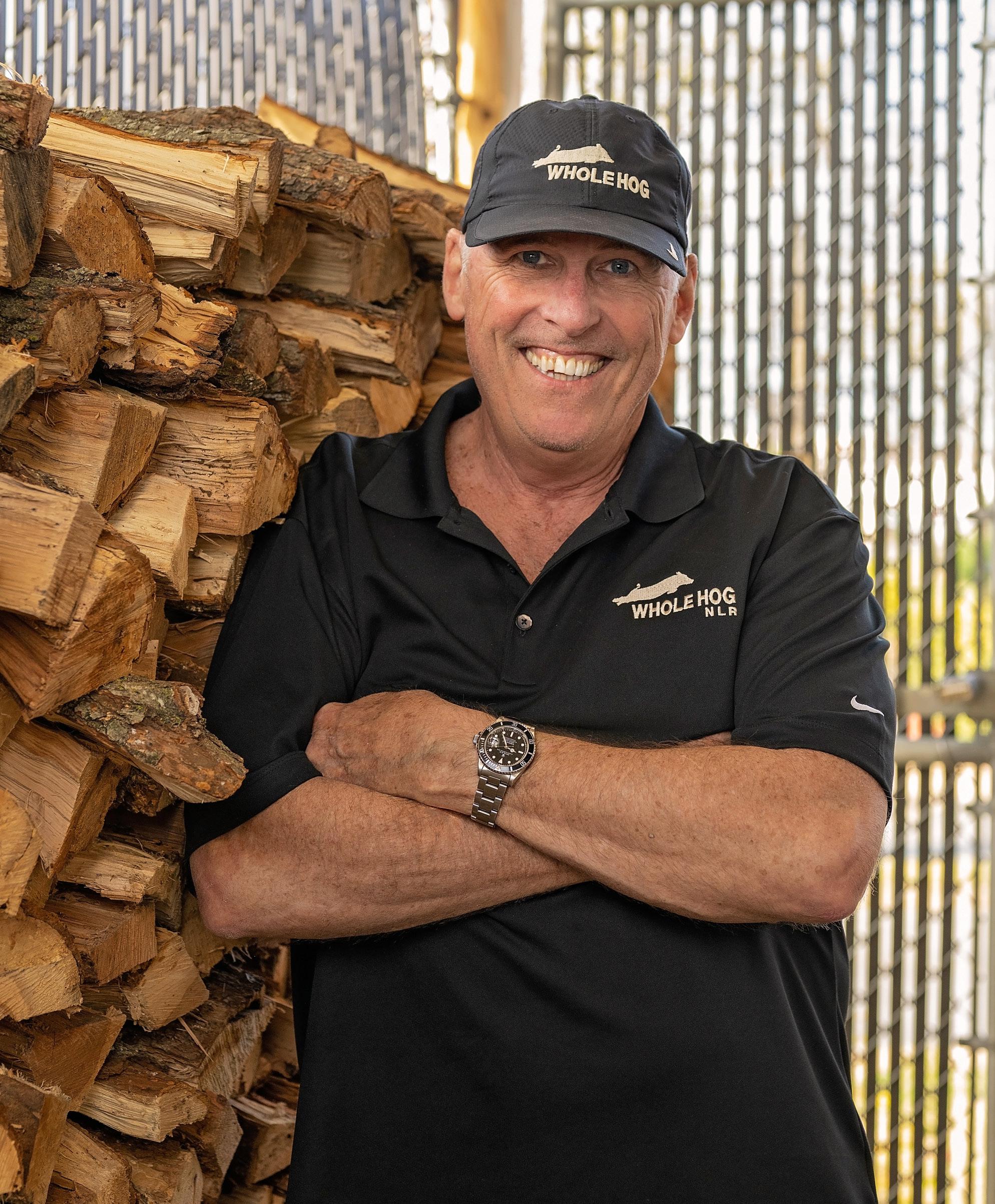








UNIFYING THE PEWS: Pastor Josh Hurlburt (left) and Bishop Steven Arnold (right) combined their congregations to create an integrated church in a city where racial division spans decades.

HOW LITTLE ROCK’S GRACE UNITED IS DESEGREGATING SUNDAY MORNINGS.
BY LEON JONES III PHOTOGRAPHY BY BRIAN CHILSON

“I think it is one of the tragedies of our nation, one of the shameful tragedies, that 11 o'clock on Sunday morning is one of the most segregated hours, if not the most segregated hour, in Christian America.”
—Dr. Martin Luther King Jr.
Driving along Cantrell Road in West Little Rock, you might notice a digital sign that reads, “When a Black church and a white church make one church.”
The church behind that advertisement is Grace United, the result of two congregations that merged in 2022 after two years spent meeting in the same building. If you ask the congregants, it’s an approach to making the church body look more like heaven — diverse, welcoming and united under the belief of the gospel.
If you ask Pastor Josh Hurlburt, it’s a promise fulfilled by God. And if you ask parishioner Jenna Eggleton, it’s a rarity. “The diversity in our church is representative of the population of the city we’re in,” Eggleton said, “and that isn’t true of really any churches in Little Rock outside of ours.”
What happens when you combine two different worship styles under one roof? What kind of culture does that create? These are questions that came up in September 2022 when the Black congregation at Grace Temple and the
white congregation at Grace Church ultimately decided to merge. Now, as Tiffany Cannon, an original member of Grace Temple, said, when new members attend Grace United, they can’t tell who went to which church originally.
“We may not be blood family,” Grace United member Rickitha Hicks said, “but once you walk through those doors, we’re adopting you. Simple as that, we’re adopting you.”
With a deep commitment to living life together and inviting in strangers, Grace United has done something remarkable: effectively and productively combining an African American church with a white church to unify people — and in a city where racial division and distrust span decades. In a time where it can be more comfortable to retreat into our own communities, Grace United is diving headfirst into a church model that looks a lot more like the one Jesus imagined.
‘THIS SHOULD NOT BE’
It’s not inconsequential that Grace Unit-
ed worships in West Little Rock, an affluent area of a city where Gov. Orval Faubus once declared he would prevent nine Black students from attending Central High School, and where the construction of Interstate 630 demolished a Black neighborhood that was once vibrant with commerce and community pillars, creating a literal wedge between residents.
Little Rock is almost evenly populated by Black and white residents. In the 2020 census, the city was 42% white and 40% Black. So why don’t more congregations look like the one at Grace United?
That question’s been on Pastor Hurlburt’s mind since he was a teenager in Memphis, the city where Dr. Martin Luther King Jr. was assassinated. Hurlburt, white, attended a majority-Black junior high school and recalled being able to cut the racial tension with a knife. From then, he felt a calling to bridge divisions between people.
“I think the Lord builds us from the ground up to be who he wants us to be,” Hurlburt said. “And so from youth, I’ve had this feeling of, ‘This should not be.’”
‘PUMP YOUR BRAKES’
Decades later, after graduating from seminary, Hurlburt took the helm at Grace Church. Objective number one was for his church to not be all-white. In Little Rock, though, there weren’t many examples to follow, so he did some research suggesting he should start with diversifying his staff.
He hired an African American worship pastor and student pastor. It wasn’t enough. Hurlburt prayed, asking what more he could do. Then, in a moment of unmistakable clarity, God told Hurlburt to pray “for an African American congregation to come into your building, and then you two will merge together to make a new entity.”
This prayer was seemingly answered when a mutual friend connected Hulburt with Bishop Steven Arnold, a Black pastor who was looking for a new church home after deciding not to renegotiate a lease agreement for his existing building. Grace Temple had been through a lot during the pandemic and needed a fresh start. After being connected by a mutual friend, Arnold took a team to tour the Grace Church facility.
In that first interaction, Hurlburt said to Arnold, “I know why you’re here, but you don’t know why you’re here.” Hurlburt then suggested the churches come together to be one. Arnold, apprehensive of the overture, “greatly discounted those words,” he recalled. “I haven’t had the best experiences with white congregations, and I’ve had quite a few encounters. I’m like, ‘Whoa, pump your brakes,’” Arnold said.
To borrow the words of King, they began taking the first steps in faith, even when they


WORSHIPPING TOGETHER:
didn’t see the whole staircase. The two started to court one another, combining services on every fifth Sunday at Arnold’s suggestion, on the precipice of a new faith community in Little Rock.
There were major differences in culture that Grace Temple and Grace Church needed to reconcile. Arnold comes from a Pentecostal background, known for worship practices that are more active — and interactive. Hurlburt, meanwhile, comes from a more somber evangelical tradition in which congregants sit quietly during the sermon.
The two also had to help their congregations understand the merger.
Arnold and Hurlburt refer to this period as a dating era. Longtime and new congregants of both churches had skepticism about the merger. Rickitha Hicks, for one, had just acclimated to attending Grace Temple and was in the midst of major life changes, leaning on the church for support. Hicks grew up attending services at Church of God in Christ and Baptist churches. Each denomination had a strict protocol and she didn’t know what Grace’s new normal would be like.
Rebecca Glazier, a University of Arkansas at Little Rock professor who directs a project called the Little Rock Congregational Study, notes that it can be difficult to diversify a church’s demographics. “Somemetimes Black
congregations were hesitant to begin partnerships with white congregations because they weren’t always entirely sure of their motives,” Glazier said.
Hundreds of years of state-sanctioned enslavement, systemic racism and economic disenfranchisement have given Black congregations good reason to question the motives of white clergy seeking engagement. Additionally, she said, “Sometimes they were just tired. They were tired of explaining to white congregations why racism was bad, or they were tired of doing yet another panel conversation, or yet another book group that was just talking without any real, concrete results.”
Another hurdle Glazier observed was that “many white congregations were hesitant to start new programs because they were afraid of doing the wrong thing.”
Plus, music and praise styles can dictate how welcome people feel in a worship space, and a predominantly white congregation may not have had much practice folding less familiar traditions into their own worship practices. “The majority-white culture sometimes is just not comfortable with Black worship style, and so that’s what gets left behind when churches integrate,” Glazier said.
At Grace United, however, music became a unifying force amongst congregants. Worship leader B. Cordell Piggee created a worship style everyone could get behind, saying he has a “God awareness.” Instead of starting worship on a high as in a traditional Black
church, he begins in a more relaxed place, inviting people to come on the journey with him toward the ecstatic. “There are times when we are so reverent in our style and then it turns to a more jubilant praise,” he said.
Tiffany Cannon, a member of Grace Temple, recalled the first time the churches met together on a fifth Sunday. “Our first service that we had integrated, it was phenomenal,” Cannon said. “It was a feeling that was like, ‘This is what we’re supposed to be doing.’” Cannon remembered members of both churches saying they needed to meet more often, and eventually the churches combined services more frequently.
Cannon’s wall started to come down, and she wasn’t alone. “We’re in service together and the person on my side is probably not praising God the way I do,” she said, “but they have their own style. I’m not praising the way they do, but we’re making it work and still glorifying God.”
Congregant Jenna Eggleton said she loves how, at Grace United, she can worship in the way she is called to worship; no need to act a certain way to make people feel comfortable. These days, she said, she praises “like David dancing before the Ark of the Covenant.”
Hicks noted that watching the patience and willingness of the two pastors to learn and grow as a result of the merger helped her on her journey to accepting it. If they could do it, she thought, she could do it, too.
Glazier found in her 2020 survey that faith communities viewed race relations as the number one issue people wanted to see their congregations get involved in.
“Many people see race as a sin issue, or as an issue that is really dividing society apart. Religion has tools like forgiveness and repentance and reconciliation that can be brought to bear on an issue like racial justice and reconciliation and the pain and the hurt and the division that has existed on this issue, particularly in a city like Little Rock where there’s been so much harm in the past,” she said.
Cannon said the biggest lesson she’s learned as part of this merger is “being open to new experiences and laying down my assumptions and just getting to know the truth and getting to know people … it’s OK to sometimes have tough conversations.” She also said it’s refreshing that she can invite people to church
“and it doesn’t matter what they look like, what they sound like, because I always tell them, ‘You’re going to find somebody in my church that matches you.’”
Jacob Eggleton, the older brother of Jenna Eggleton, said Grace is good about love and tolerance. Against the backdrop of a bitterly divided country, Grace has a formula that can be applied to the world around us: “We’re not just going to tolerate you, we’re going to love you,” Eggleton emphasized.
Jenna Eggleton said the love goes beyond the difference in skin color, and that anyone regardless of background or their story is welcomed at Grace. Having people of different backgrounds in church paints “a fuller picture of God,” she added.
Hicks has learned lessons of love and grace. In the midst of the merger and wondering how opposite cultures could worship together, she came to understand that “change is OK. Because with change, you never know what God has in store for you.” These lessons also play out in her professional work with Child Protective Services. “We have to be able to show others love, even though we don’t know these families — even though we don’t know half of the families that we’re dealing with, or their situation or their backstory,” she said.
For Arnold and Hurlburt, the work of racial reconciliation happens as people do life together and serve together. It gets into the DNA of the church. This ministry is not a Band-Aid fix for unity, Arnold said, and “we’re starting to live our lives together from the Sunday morning worship.”
“I think what’s from the heart reaches the heart,” Piggee said. “People know what is genuine and what is not. And even on a bad day, one thing that we on our team strive to do is to make sure Jesus is seen, and not us.”
When it comes to differences in the church, Hurlburt pointed to one of its core principles: “Unity over uniformity.” He doesn’t want everyone to be the same, which he said is what the rest of the world leans into, causing them to demonize people different from themselves.
“We can have completely different views on whether we like policies X, Y and Z. That doesn’t mean that we can’t come together,” he said. “If Jesus is who he says he is, and if he called us to what he says he called us to, then I should be able to be literally best friends and hang out with people who disagree with me politically and on all these things because there’s something bigger than that.”


“Being








AN INNOVATIVE PARTNERSHIP BETWEEN ISBELL FARMS AND MOODY BREWS LOOKS TO UNLOCK A NEW MARKET FOR ARKANSAS-GROWN RICE.
BY PHILLIP POWELL PHOTOGRAPHY BY BRIAN CHILSON

Founded in 1946, Isbell Farms in Lonoke County has impressed many onlookers over the years with a commitment to sustainable rice farming, using water-saving tactics in the rice fields and generating much of its electricity through solar energy to reduce carbon emissions.
More recently, the family behind the multigenerational business also managed to corner the sake market, supplying breweries in both Arkansas and places as far-flung as Mexico and Canada with the rice needed to make the Japanese wine. But all the success with milling and selling sake-quality rice to operations like Origami Sake in Hot Springs left Isbell Farms with an economically dubious surplus of broken rice and rice flour.
Turning harvests into a sake-quality product requires a special mill to break the rice down into polished little white pieces. The process leaves behind disfigured kernels called brokens, along with a powdery substance known as rice flour. Though both of these scraps are perfectly good and edible rice products, Isbell Farms’ traditional customers weren’t interested in buying them.
Sixth-generation rice farmer Harrison Jones — the son of Jeremy and Whitney Jones, the daughter of the boss of the farm, Chris Isbell — told the Arkansas Times the two rice byproducts were piling up so fast, his family didn’t know what to do with it all.
“Some of the brokens go to dog food or cattle feed, but we still weren’t able to get rid of all of it,” Jones said. “It is still a really good, high-quality product, but it’s not what sake brewers want and it can’t be used for table rice
because it’s broken down and totally different.”
Luckily for Jones, an hour drive away from the farm in the Pettaway neighborhood of downtown Little Rock, Josiah Moody was looking for somebody — really anybody — to sell him rice for his new craft beer brewery, Moody Brews, which opened in 2024. Moody reached out to mill after mill, and farmer after farmer, but his startup was so small that he couldn’t take in the volume of rice those operations were interested in selling.
Moody needed a few bags of rice per month, not a few traincarts full like the big rice farms are used to selling. Plus, he loved the idea of using locally grown rice from the largest rice-producing state in the country for his Arkansas-brewed rice lager. He’d been sourcing from Sam’s Club under the assumption that it might come from Arkansas, but wanted to start a truly local partnership.
So when he got the call from Jones about buying some broken rice, he jumped at the opportunity.
“There was this stigma on using rice for craft beer because for a very long time the Brewers Association messaging was, ‘We don’t use these adjuncts,’” Moody said. “‘Ours is all barley’ is what they said. That messaging had the effect for decades of making people, and craft brewers in particular, not want to use rice. So part of the challenge is that a lot of brewers probably don’t want to use what they would consider an inferior grain.”
Despite the snooty attitude among some craft breweries toward using rice in brewing, Moody was determined to make something
delicious.
“I’m in Arkansas, and rice is just another plant. There is nothing inherently good or bad about rice or barley; it’s just you get sugar out of it to make alcohol. Both are valid,” Moody said. “And if the big boys like Budweiser can do it, then I can figure out a way to do it. And it speaks to the place where we are. I don’t use rice in every beer, but why not? Because it’s here.”
He now expects the New Ground Pilsner, which he named after a field on Isbell Farms, to be his best seller this summer.
“The reason that Budweiser and Busch are so popular is because they have an extremely light, easy drinking, not full-body beer,” Moody said. “That’s because it has rice in it! That’s how you get that flavor. So it will continue to grow.”
Moody spent years brewing for places like Vino’s in Little Rock and Bike Rack Brewing in Bentonville before starting his own bar and brewery. He loves the creative process of brewing beer, telling the Arkansas Times that he was a biology major in college, and that the science of breaking grains and sugars down into a delicious brew is what has kept him in the business so long.
He’s less interested in running the bar at Moody Brews.
“Front of house is my nemesis. I get anxious, I feel trapped and I just can’t do it. I don’t mind it but there is just a limit to how long I can interact with people,” Moody said with a laugh. “I love playing my music loud, and brewing my beer, and that’s it. I’ll do dishes when we are busy, but I don’t even know how


“RICE IS
JUST ANOTHER PLANT.
THERE
IS NOTHING INHERENTLY GOOD OR BAD ABOUT RICE OR BARLEY; IT’S JUST YOU GET SUGAR OUT OF IT TO MAKE ALCOHOL. BOTH ARE VALID. AND IF THE BIG BOYS LIKE BUDWEISER CAN DO IT, THEN I CAN FIGURE OUT A WAY TO DO IT.” — JOSIAH MOODY






to work the point-of-service system.”
Jones, who is 24 years old and a recent college graduate, has been working on the family farm since he was a young teenager. He even continued to work part time while earning his degree in marketing and business from the University of Arkansas at Little Rock. Now he’s full time at the farm, and said he couldn’t be doing anything else. Jones is passionate about working out new sources of revenue.
That fateful call between two guys trying to solve two separate problems set off a lasting friendship, along with a promising business partnership.
“My fiancee and I are craft beer lovers, which is kind of what led us to pursue the beer brewing idea,” Jones said. “But since we’ve met Josiah, his brewery has become our favorite spot. His staff and the atmosphere he’s created is our favorite in town, and they make us feel at home. It’s a wonderful and important business partnership, but we’ve also found some great people and friends through the process.”
At the start of the partnership, Moody was purchasing a few bags of broken rice every month from Isbell Farms. It wasn’t the best revenue stream for the farm, Jones said, but he was glad to at least be selling the broken rice instead of letting it go to waste. The rice flour, however, was still sitting idle, so Jones approached Moody with an idea.
Broken rice has long been used for rice lagers, but according to Moody, no one was using rice flour. When Jones asked him if he
could make it work in his brewery, Moody gave it a try.
One of the challenges of using broken rice for craft brewing is that it first needs to be gelatinized, meaning the rice has to be heated and cooked down before its sugars can be utilized. For a small operation like Moody Brews without much space and infrastructure, it was difficult to undertake that process en masse. Moody said he thinks that the machinery needed is what kept more craft breweries from making rice lager.
After a few trial-and-error runs, Moody found that the rice flour could be used to make his New Ground Pilsner, allowing him to com pletely skip the step of cooking the rice down. The process was a game changer for mass-pro ducing a craft rice lager, Moody said.
“He took something we didn’t know any thing about, as far as brewing goes, because we didn’t have any experience or knowledge on that at all,” Jones said. “He figured out how it could be used for good.”

Moody Brews has expanded so much over its first year in business that Moody is now brewing large batches using the rice flour at Point Remove Brewing Company in Morrilton. And he’s trying to get his new brewing innovation adopted in the broader Arkansas craft brewing scene as well.
From Jones’ perspective, a more widespread adoption of rice by craft breweries in the state offers a great opportunity for Isbell Farms, and Moody’s innovation of using rice flour directly in brewing might just open that door. Now they just have to convince brewers to take it seriously.


JULY
SAT 5: THE CHRIS BAKER BAND FRI AND SAT 11/12: DJ YK
SAT19: DJ YK
SAT 26:
EVERY TUES. AT 6 P.M.


BY GRIFFIN COOP

On an April afternoon last year, I took off up the much-too-steep hill on my street for a three-mile run in Little Rock’s Hillcrest neighborhood.
I’d been on a fitness kick for a while and had been running regularly after I embarked on a series of stories about interesting workouts around the city. At various times in these creatively designed workouts, I had worn an electric suit that shocked me into shape, rode a bike and a rowing machine in a steamy sauna, and even tried my hand at pole dancing, which I found to be way harder than it looked.
Then my editor spotted an article in The New York Times about people pairing cannabis with exercise. I figured I’d give it a shot despite being pretty much the furthest thing from a regular weed user.
As I laced up my shoes, I drank a Sipz cannabis seltzer. My grapefruit-flavored drink included 2mg — a tiny amount — of hempderived psychoactive THC. Given my lack of experience with cannabis, this endeavor was a little bit outside my comfort zone — hence the baby dose. I worried that anything stronger might have left me lying on the floor or addressing unwanted dizziness.
This drink and others like it were legal at the time in Arkansas even without a medical marijuana card and could be bought in CBD stores, restaurants and smoke shops.
I finished the drink in about 15 minutes and did some stretching while I waited for the
effects of the THC to settle into my system. I had planned to start running at 4 p.m. before deciding to start at exactly 4:20. Appropriate, I thought.
Before I began, I felt a little lighter and maybe a little floaty, but nothing extreme. Once I hit the road, I noticed I went through the first mile a little faster than on a previous run, despite a continuous headwind. Later in the run, I noticed my mouth seemed a little — I don’t know — cottony? Was that related to my pre-race beverage? My breathing was a little labored, too, but I was also running up hills and pushing myself, so I couldn’t say if that was related or not, either.
Near the end of my run, I noticed I felt good and was running faster, although that part of the run was all flat or downhill. In the end, I had completed my three-mile route 41 seconds faster than a sober run from two days before.
Can I say the beverage helped me run faster or with less effort? No. Can I conclude that it didn’t help me? No, I can’t quite say that, either. I can, however, say the drink — even at a small dose — relaxed me and didn’t seem to get in the way.
I’m not the only one experimenting with cannabis and fitness, although the reasons for experimentation — and the results — are varied.
A few books address the topic of cannabis and exercise, but there isn’t a ton of them and some seem more legitimate than others. “Runner’s High: How a Movement of Cannabis-Fueled Athletes Is Changing the Science of Sports” has been on my mind ever since I saw it on the shelf at Barnes & Noble. And, while it doesn’t seem to address psychoactive THC, I was intrigued when I discovered that former NFL running back Tiki Barber wrote the foreword for “The Athlete’s Guide to CBD.”
Matt Shansky, chief operating officer and managing partner of ReLeaf Center Dispensary and Farm in Bentonville, spent about a decade in the fitness industry before entering the medical marijuana business. A college football player who earned a degree in kinesiology and a certification in sports nutrition, Shanksy worked as a personal trainer.
Shansky said research on the relationship between cannabis and exercise is limited so a lot of the information on the topic is still very anecdotal. But he hears a lot about people pairing cannabis and fitness.
“You are seeing more and more athletes coming out and publicly acknowledging that they are utilizing cannabis as a tool now,” he said.
Former Heisman Trophy winner Ricky Williams’ cannabis use is well-established and he’s got a line of marijuana products called Highsman. Three former NFL
players, including irascible quarterback Jim McMahon and offensive lineman Kyle Turley, promote the cannabis brand Revenant, and McMahon says the drug has helped him avoid opioids. Former NBA All-Star Gary Payton has a cannabis strain he promotes for overall wellness after seeing his mother struggle with cancer.
Some athletes make use of cannabis in an attempt to improve performance (like running faster), although there’s not much evidence to support that, Shansky said.
But both high-level athletes and Regular Joes use cannabis for increasing focus, decreasing pain sensitivity, improving recovery, soothing inflammation and tamping down anxiety and insomnia.
“(Sleep) is one of the more overlooked aspects of recovery,” Shansky said. “We don’t think to put an emphasis on sleep. That is when our body is repairing.”
While research is limited, some academics are trying to get a handle on the attitudes and relationships that may exist between marijuana and the gym.
J. Derek Kingsley, a professor in the exercise science and exercise physiology program at Kent State University near Akron, Ohio, has been looking into the matter for about five years. When a student complained about someone who smelled like weed at the gym, Kingsley wanted to learn more.
Kingsley developed a questionnaire that determined about 13% of visitors to the university gym had used cannabis beforehand. Kingsley noted that study was performed a year before Ohio legalized marijuana recreationally — they only had medical marijuana at the time — and he suspects that number has increased.
Kingsley has expanded his study to find out more about folks who use cannabis before, during and after exercise and has begun to study ultramarathoners.
“I assumed they were stoned when they made that decision,” Kingsley jokingly said of the runners who enter races of 100 miles or more.
On a serious note, Kingsley, who uses cannabis for pain management following a fall during an Ohio winter, said he doesn’t believe cannabis is a performance enhancer. He does believe it helps with athletic recovery by helping with sleep, decreasing pain and reducing inflammation.
“If you can kill the pain and sleep better, then you are back in the gym giving 100% in a shorter amount of time,” he said.
Taylor Ewell, a doctoral student in the human bioenergetics program at Colorado State University, recently led several cannabis studies, including one examining the impact of a 10mg edible on different types of exercise intensity. The conclusion was that cannabis did not improve performance, but it
didn’t worsen performance, either.
Like others, Ewell noted there hasn’t been much research on cannabis and exercise because it’s hard to do with cannabis remaining federally illegal despite what freedoms the plant might enjoy under state laws.
During a recent interview, Ewell noted a study from the University of Colorado that found cannabis improved mood and pain during exercise but that runners ran 30 seconds per mile slower when taking it.
One takeaway from those results could be that there’s no point in using cannabis for exercise if it doesn’t positively impact performance. But there’s another way to look at the data. If cannabis doesn’t impact performance, then perhaps athletic organizations (like a number of professional sports leagues, governing bodies and antidoping oversight agencies) shouldn’t prohibit cannabis as a performanceenhancing drug.
While some sports leagues have softened their approach to cannabis use, athletes who partake can still face consequences. In 2020, the NFL stopped suspending players for cannabis use and, last year, increased the threshold for a positive test. But players can still be fined thousands of dollars for a first offense and more for additional infractions.
The United States Anti-Doping Agency, which regulates U.S. Olympic sports in accordance with international guidelines, prohibits cannabis use. The international regulators cited a study that said there wasn’t enough evidence to prove cannabis is performance-enhancing but they did find it poses a health risk and violates the spirit of the sport.
Tara Davis-Woodhall, a professional track and field athlete who trained in Arkansas, was stripped of a national long jump title in 2023 after a positive cannabis test at a competition. She was given a one-month suspension.
Cannabis has grown in acceptance nationally, as 39 states now have some form of legal marijuana program. But Ewell said he found that athletes still keep their cannabis use quiet.
“Even among the athlete community, I think it’s an underground thing,” Ewell said. “It’s not broadcast publicly very often.”
Despite what cannabis might or might not do in terms of performance, if taking it gets you to exercise, then that’s what’s important, Ewell said.
“Just for a regular person, if it makes you feel better and makes you experience less pain, then have it, because it’s not going to really increase your performance or decrease your performance, but it will get you out there exercising,” Ewell said.
CHI St. Vincent seeks Clinical Pharmacist in Little Rock, AR. Req’s doctorate degree in Pharmacy, completion Pharmacy residency, current Arkansas Pharmacist license. Apply to Tunisha.logan@ commonspirit.org.
The Observer recently had two problems, though one was more pressing than the other.
The first was that, try as I might, I could not come up with anything to write about for this column. Writer’s block or not, an Observer without an Observation isn’t much use to folks putting together a magazine.
My second problem — far less time sensitive but certainly more existential — was that I was going bald. This wasn’t breaking news, of course. It had been a slowly developing story for decades. But it had become noticeable enough over the last few years that haircuts became less about style and more about futile efforts to cover my ever-shinier pate without admitting I was sporting a combover. I knew what I needed to do, but so far I’d been unable to work up the courage to do it.
I was looking in the bathroom mirror one morning, still dwelling on the more pressing need to come up with a column idea, when it hit me: What if I could solve both problems at once?
I grabbed the clippers from the drawer and slapped a 15mm guide on the blade. Was that the right length? No idea! I only knew that I had approximately 5 seconds before I was going to find a way to talk myself out of this idea.
In a single motion, I turned the clippers on and went straight down the middle of my scalp, front to back. Then, for good measure, I went back to front along that same path. There was no going back, unless I wanted to
walk around looking like an absolute lunatic.
A minute or two into the process, I realized the 15mm guard was not short enough and switched to a 6mm one instead. A couple of minutes later, I was done. Most of my hair lay in clumps at my feet. I stared at myself in the mirror for a bit, trying to decide how I felt about the new look.
I rubbed my hand over my scalp and immediately thought of the “space monkeys” in the movie “Fight Club.” I became acutely aware of my ears, now fully visible in a way they hadn’t been since the late 1970s. I wondered if the haircut made me look like my younger brother, who embraced balding early on and has been buzzing his hair short for at least 20 years.
More than anything, however, I wondered why I’d been so hesitant to give the shaved look a chance.
The easy answer is that shaving my head required more than admitting I was balding. It required admitting that I was aging. And admitting that you are getting old is the ultimate memento mori, a reminder that, on a long enough timeline, we all die. Some people find inner peace in that realization; some of us go all Dylan Thomas and pretend like denying our baldness is part of not going gently into that good night.
A more superficial, though possibly more important, answer is I was worried that it would look weird. Not just “weird” in the sense of “no one has seen me like that before,” either. I’m talking “weird” in the “that guy’s head looks like a shorn scrotum”
or “dude has a head like a sphynx cat” sense of the word.
There’s not much I can do about the first concern. Contemplating my own mortality has never been something I’m particularly fond of doing, and an impulsive decision to chop off my hair was not going to change that.
My worries about having a strangelooking head, however, appear to have been unfounded. It’s just a regular ol’ round head, almost boring in its lack of weirdness.
I was still standing there, contemplating the bland sphericity of my melon, when my fiancee came around the corner.
“Oh, wow!” she said when she saw my newly aerodynamic look. “I like it!”
She rubbed my head, then started chuckling.
“It kind of feels like kitten fur,” she said with just a bit too much glee.
I rolled my eyes, then started laughing along with her. Of the myriad ways this experiment could have gone horribly wrong, being called “kitten head” is so far down the list that it barely even registered.
Is there a broader lesson in all of this? I’m not sure. Maybe it’s a cautionary tale about not letting a fear of change get in the way of an otherwise straightforward decision. Or maybe it’s an allegory for learning to accept growing old as part of the human condition. On the other hand, maybe it’s just a kittenheaded idiot shaving his melon because he was up against a deadline and was fresh out of ideas.


JOIN US FOR THE FALL MARGARITA FESTIVAL!
Enjoy Milagro Margarita samples from your favorite local restaurants and bartenders!
6-9 PM WHEN
THURSDAY, SEPT. 18
ON SALE NOW
VIP TICKETS $100 + fees Includes Private Seating & Bartender, Catered Buffet, Early Entry 5:30PM!
Prices go up to $40 + fees two weeks before the event. $45 cash at the door music

Scan here for more information
NORTH LITTLE ROCK WHERE SPONSORED BY Visit

ON SALE NOW EARLY BIRD TICKETS $30 + fees
Early bird price ends on 9/4/25

MUST BE AT LEAST 21 TO ENTER. NO EXCEPTIONS.










